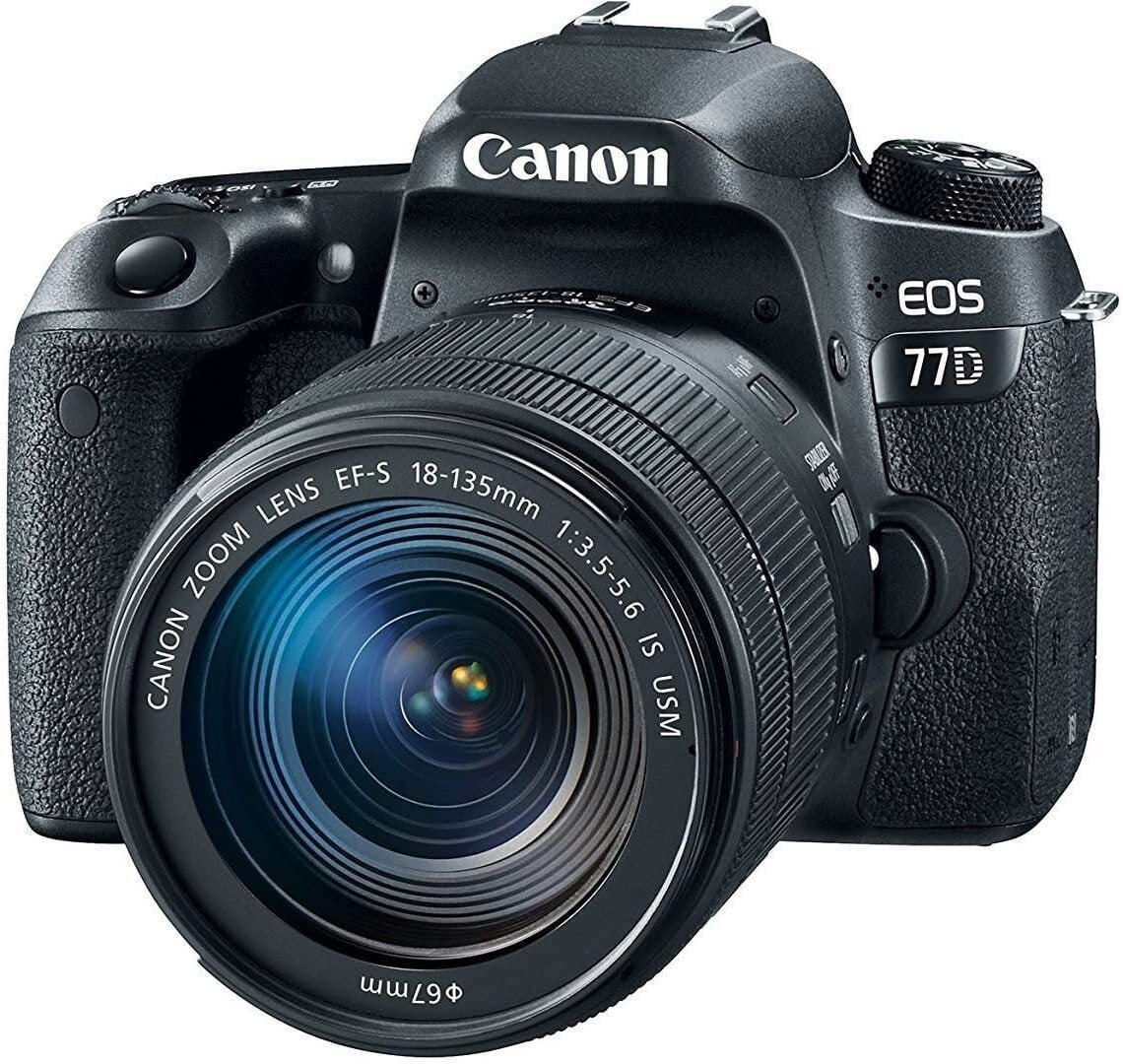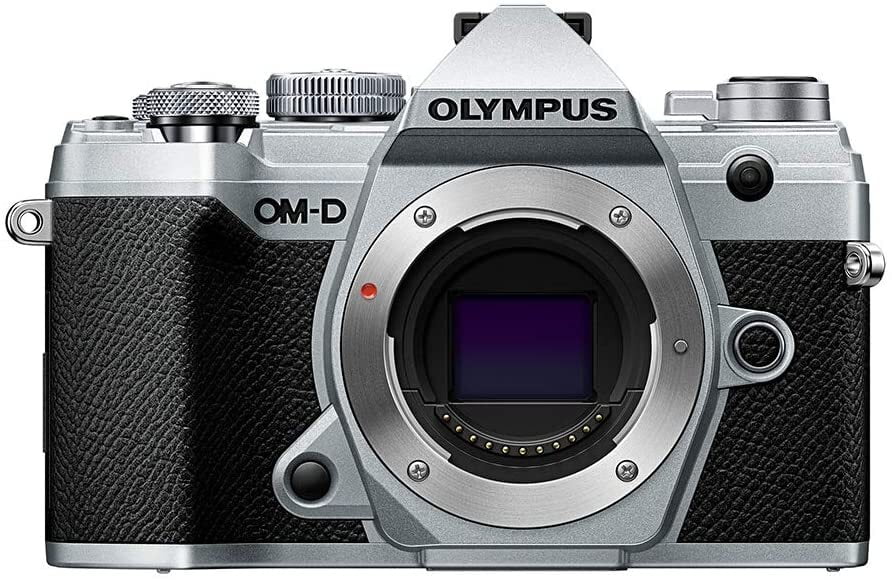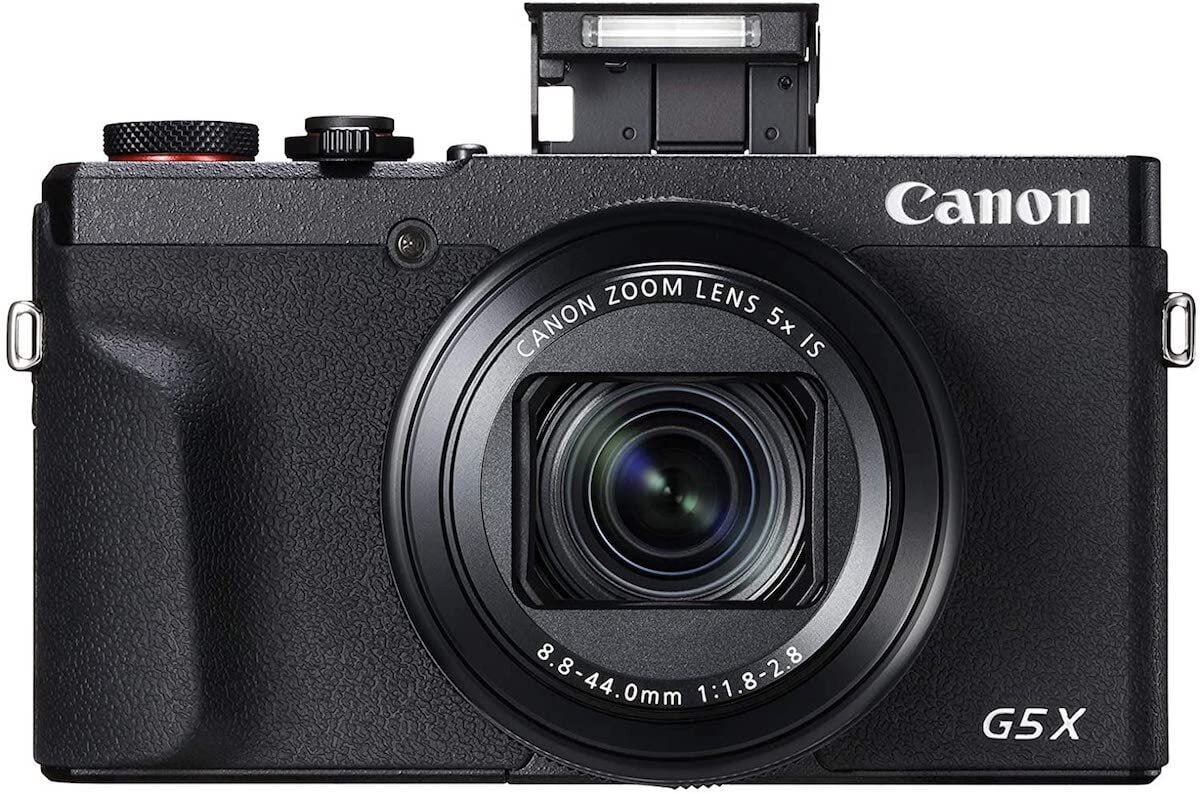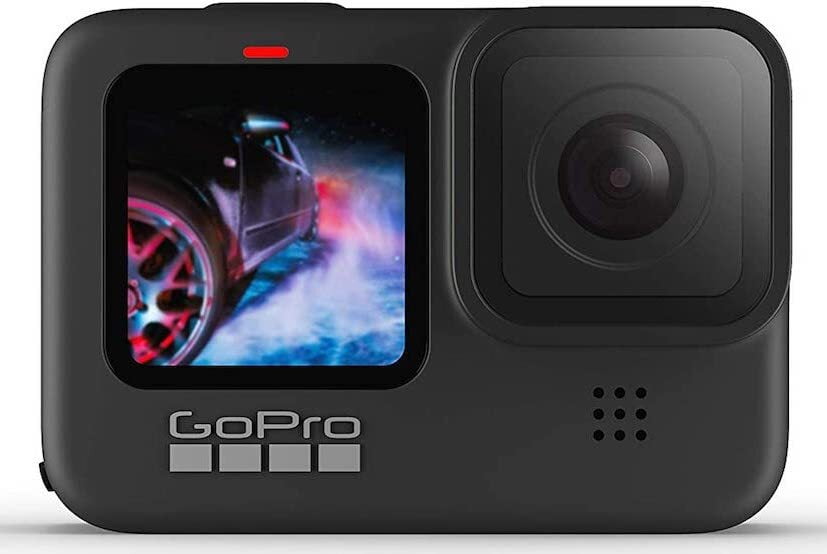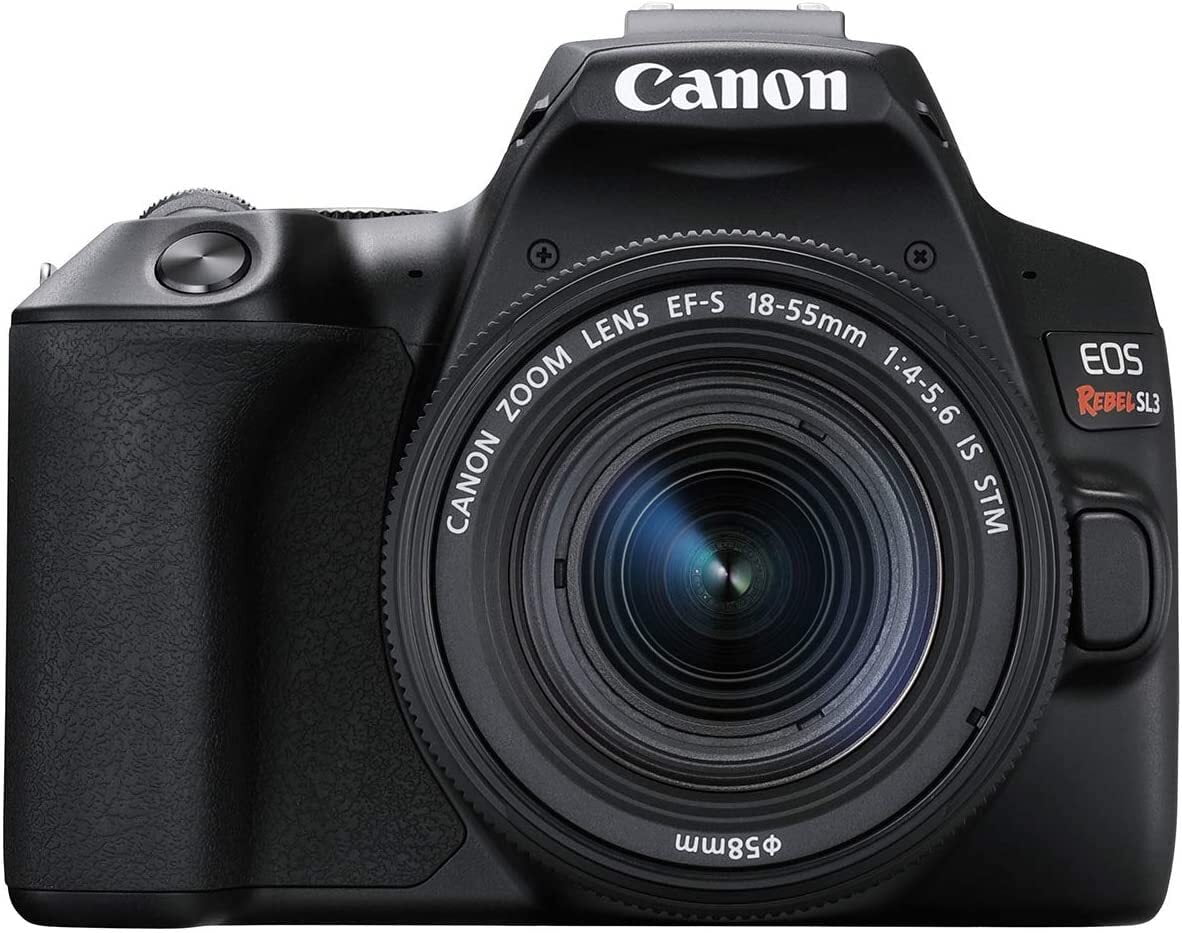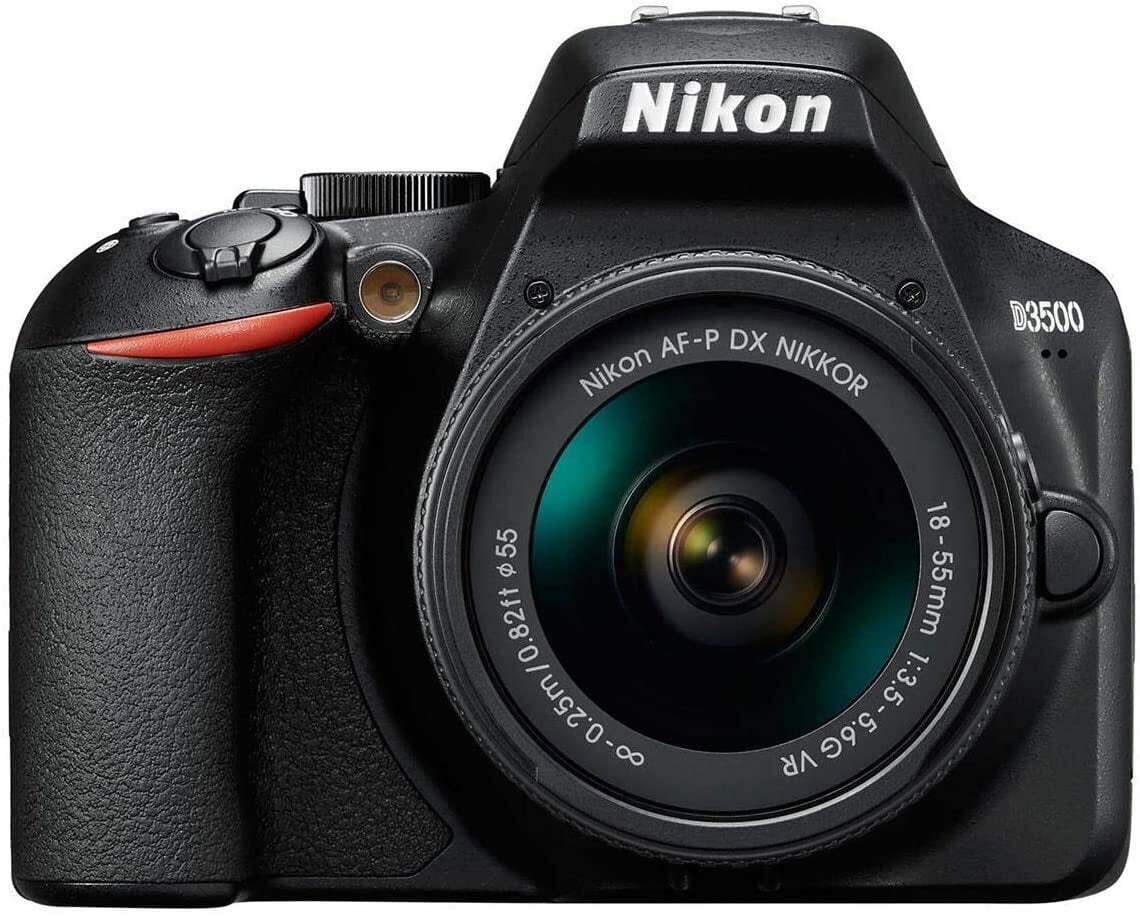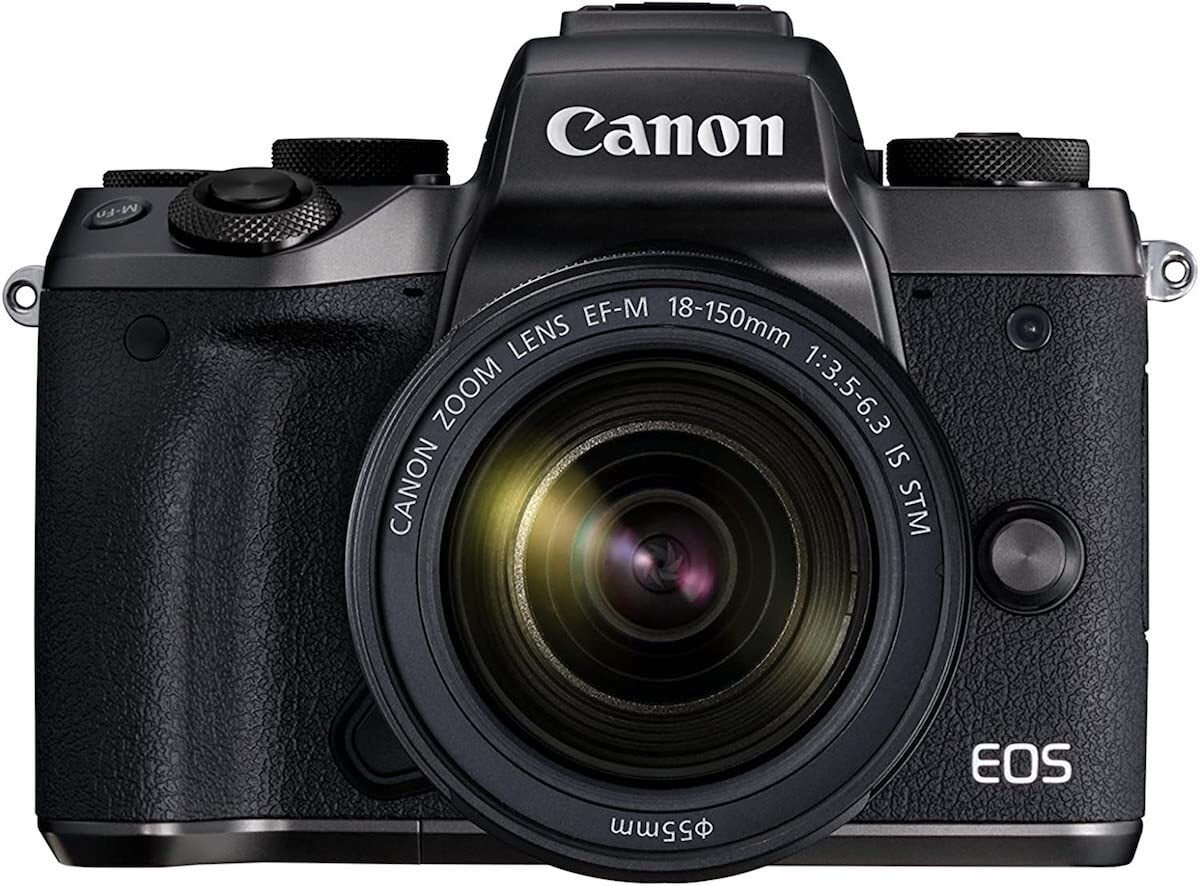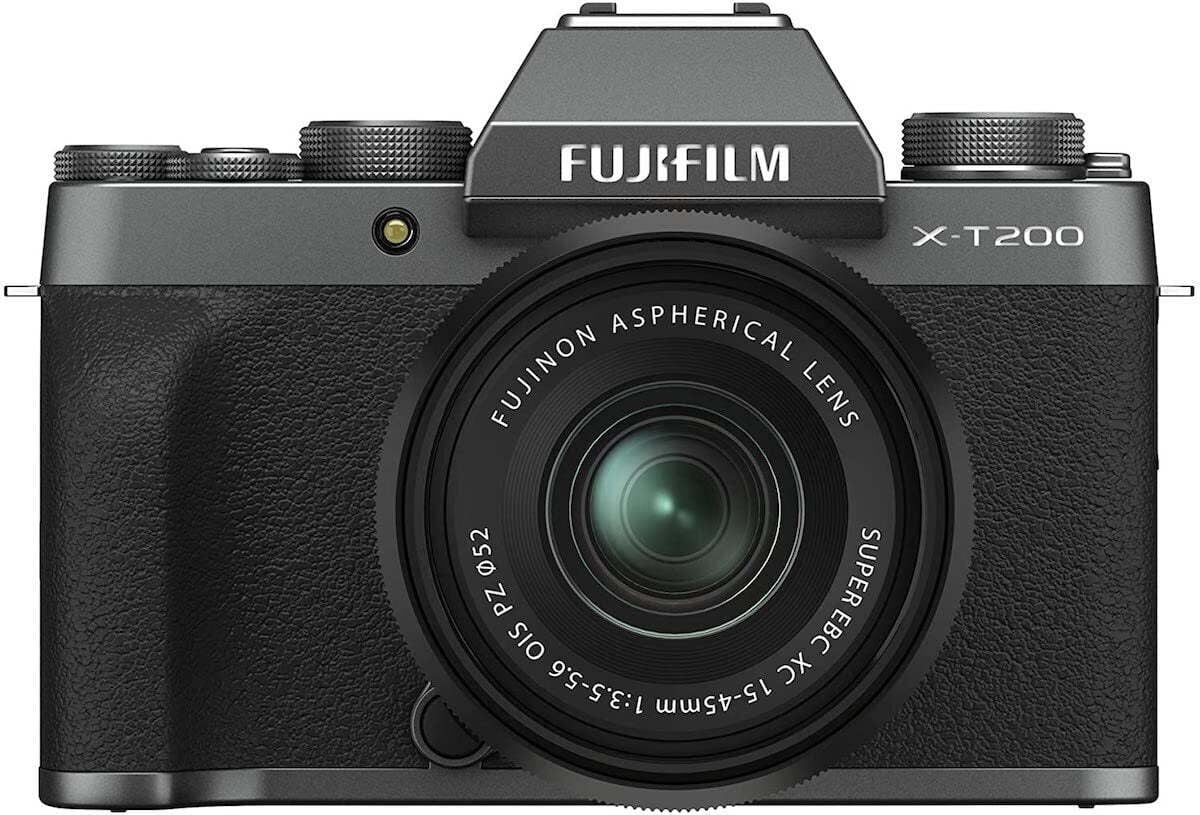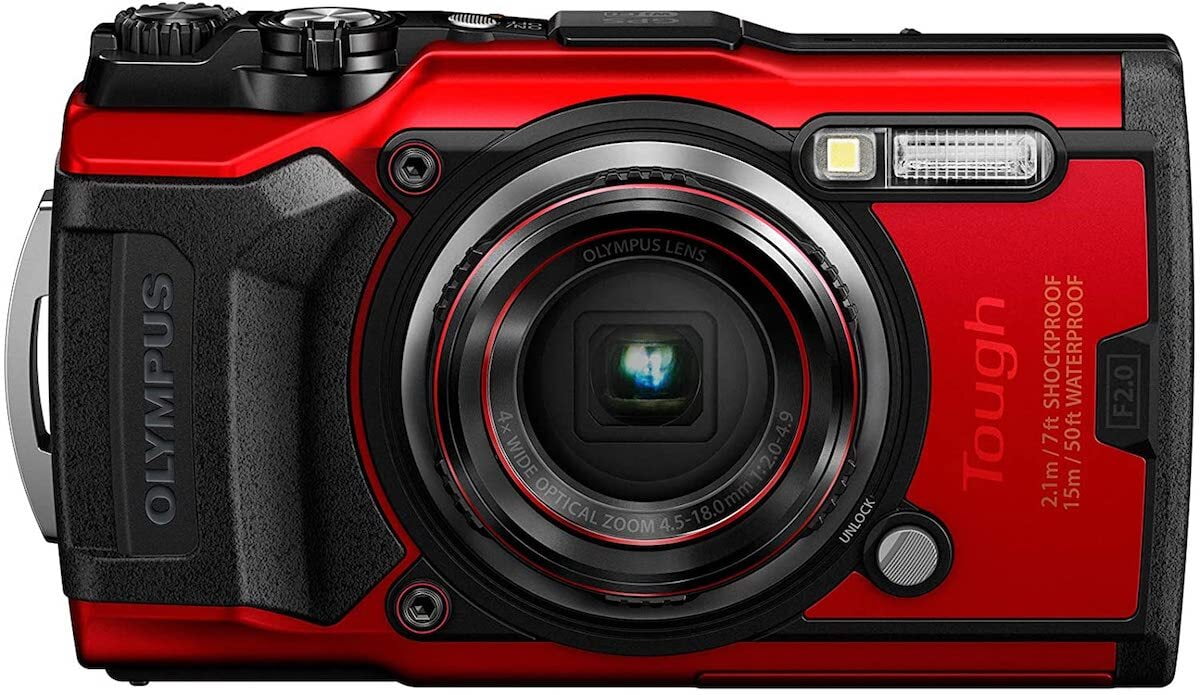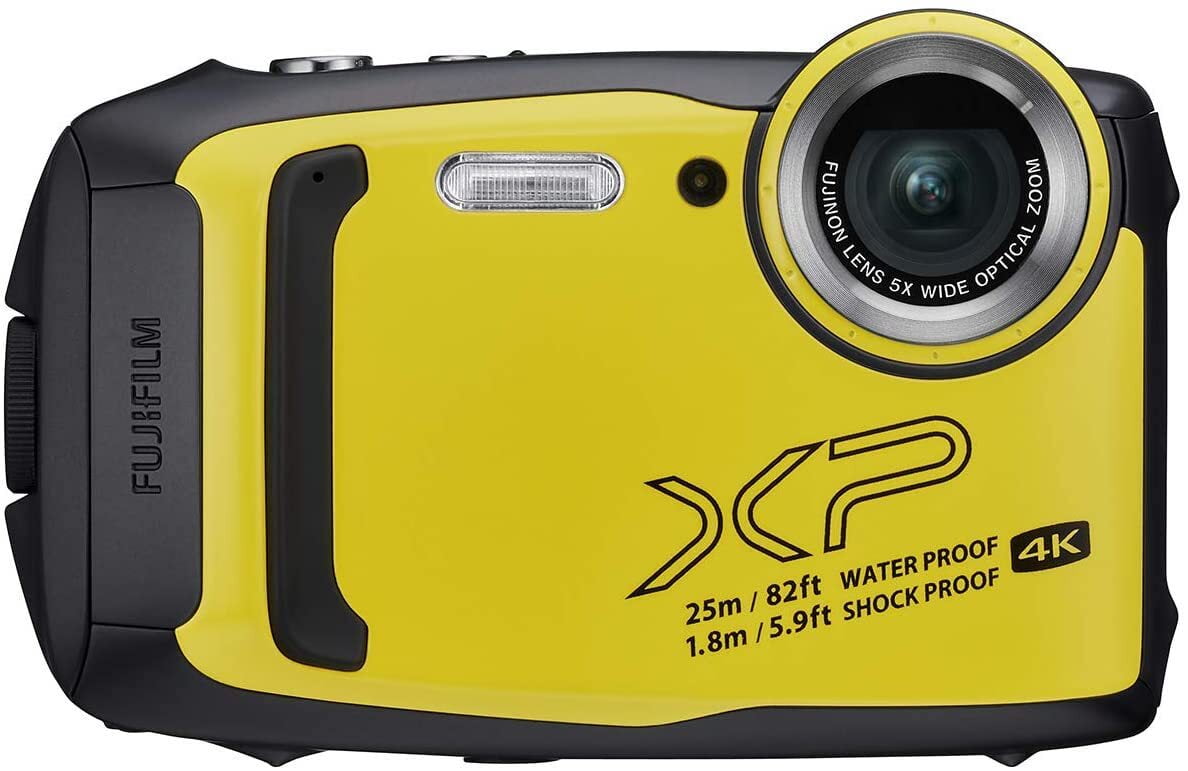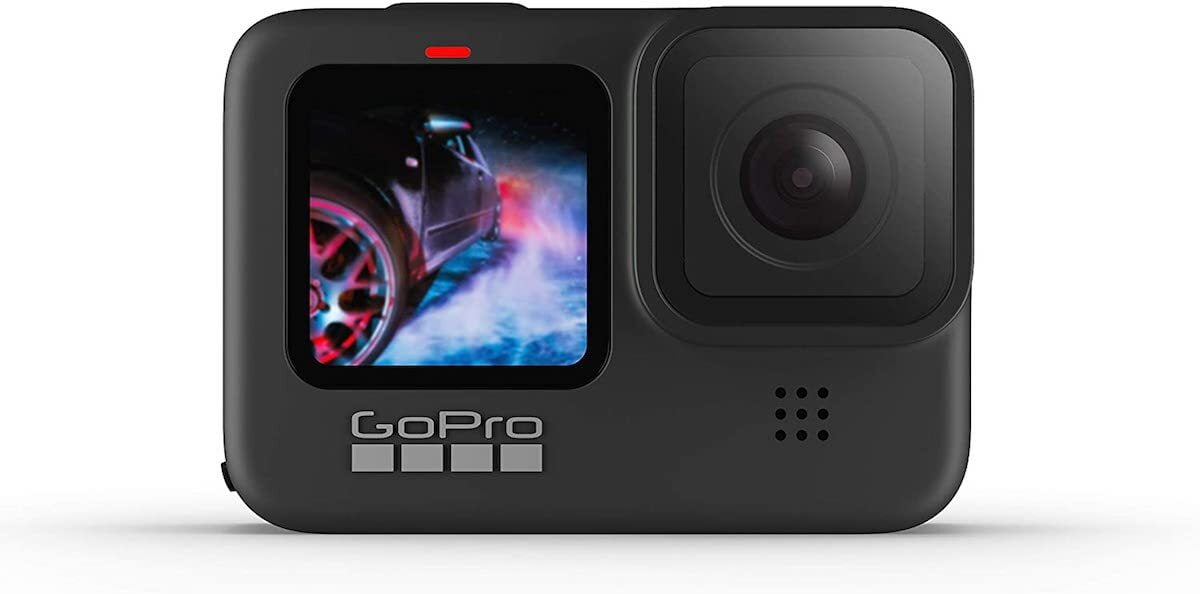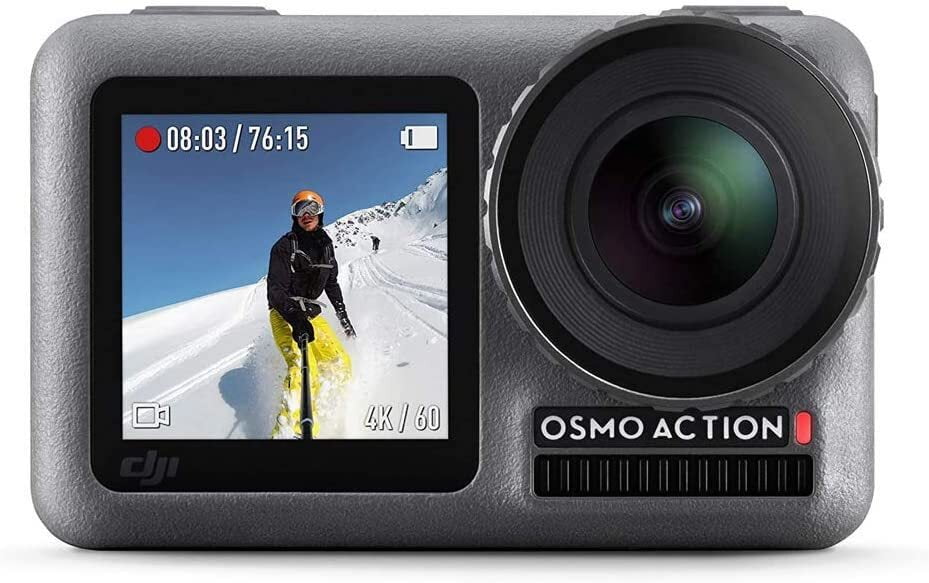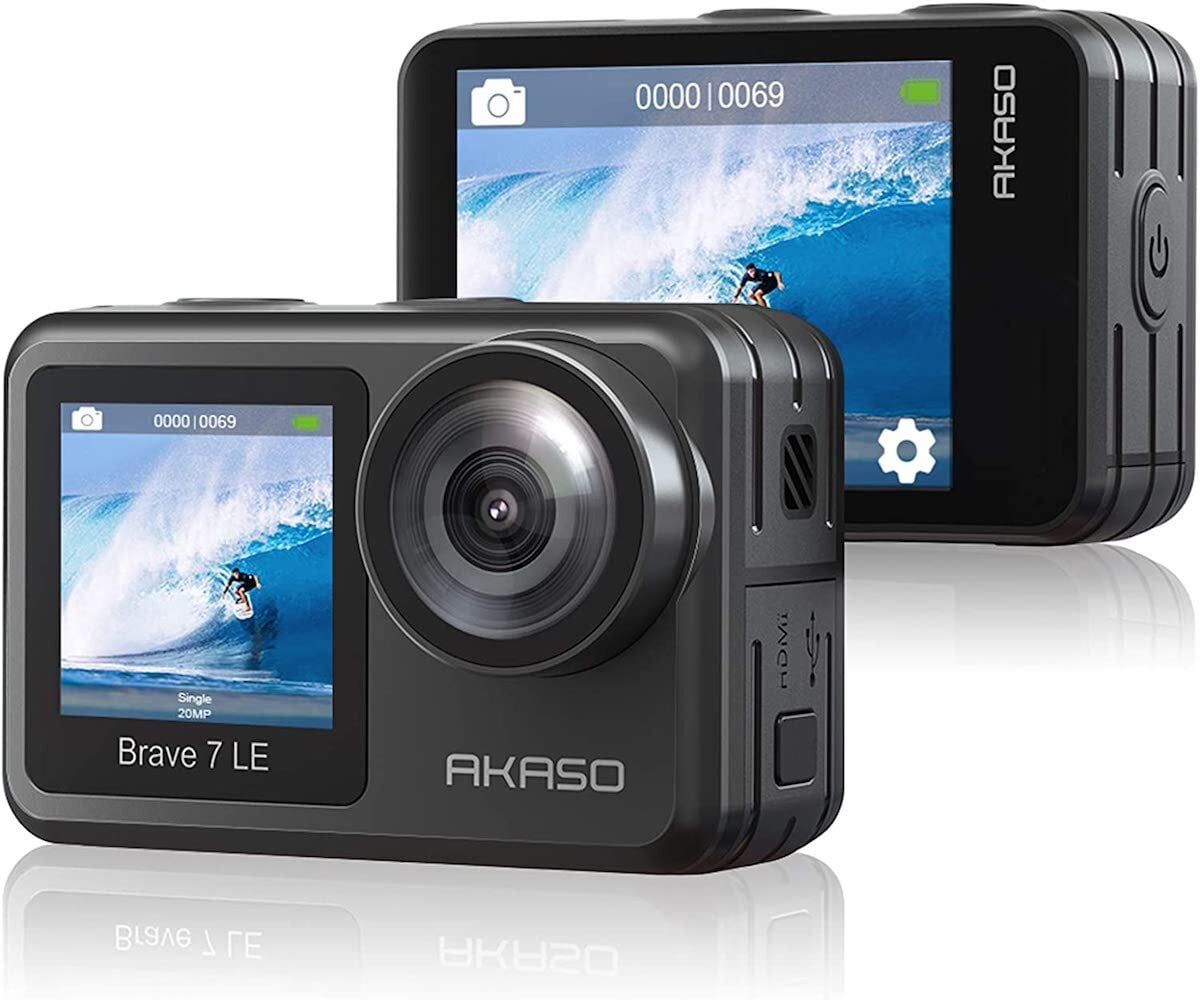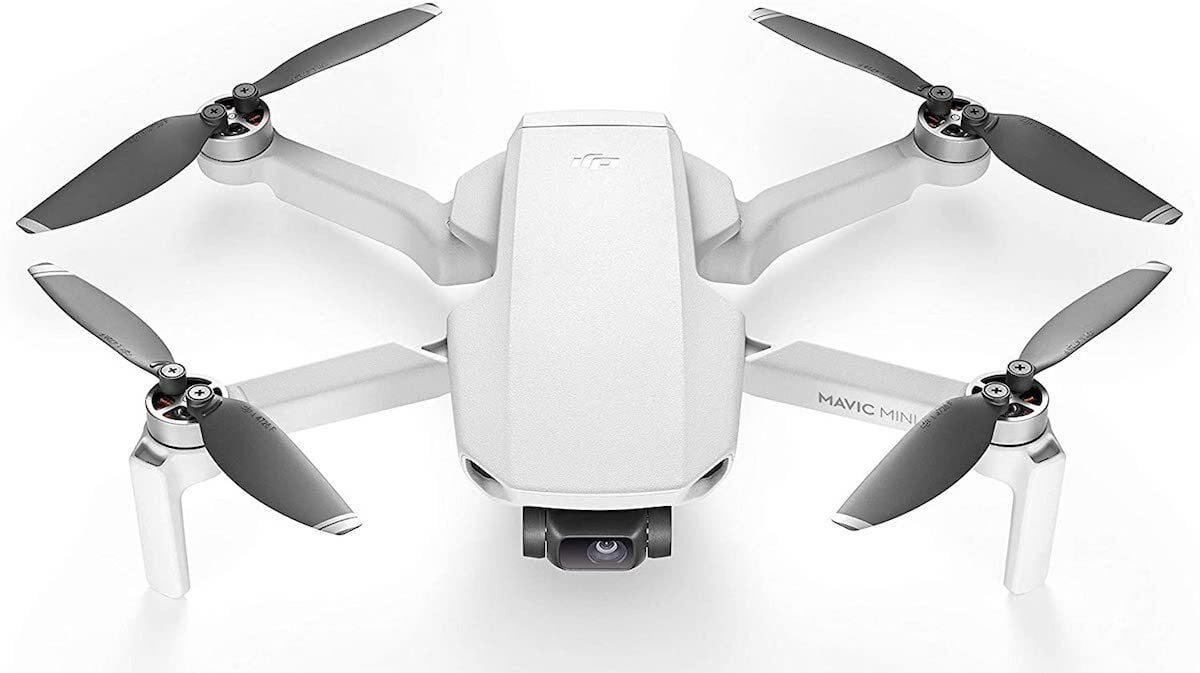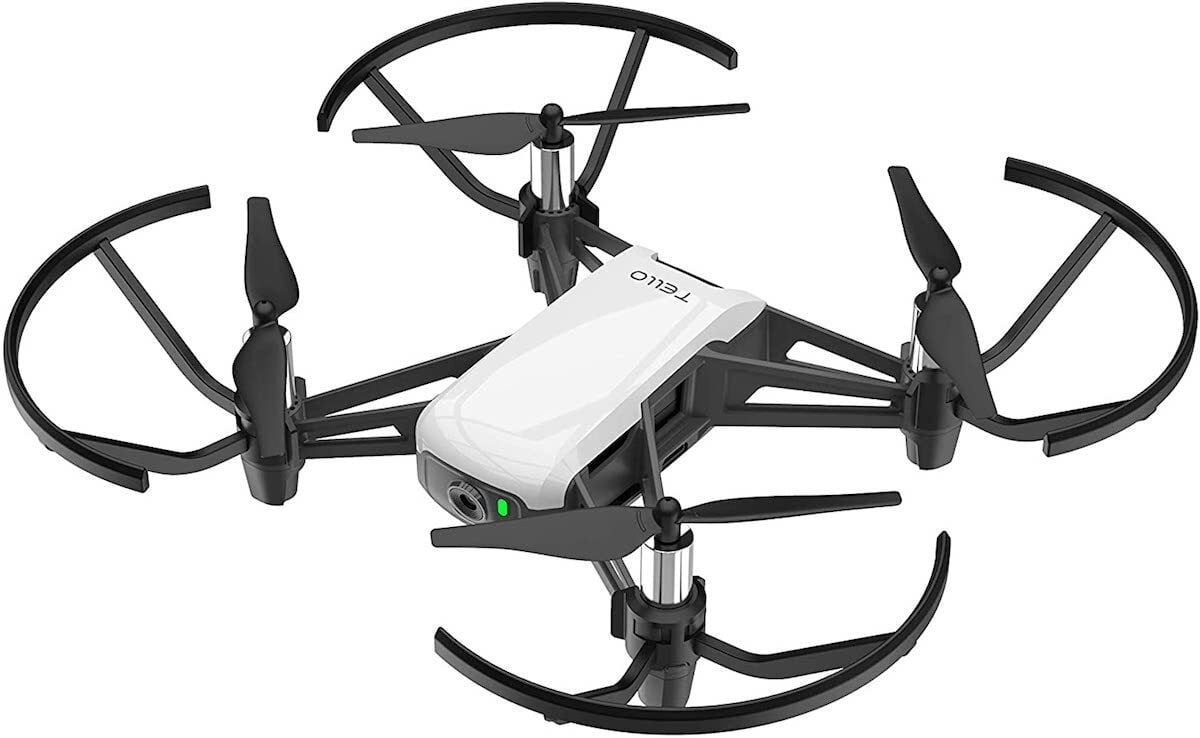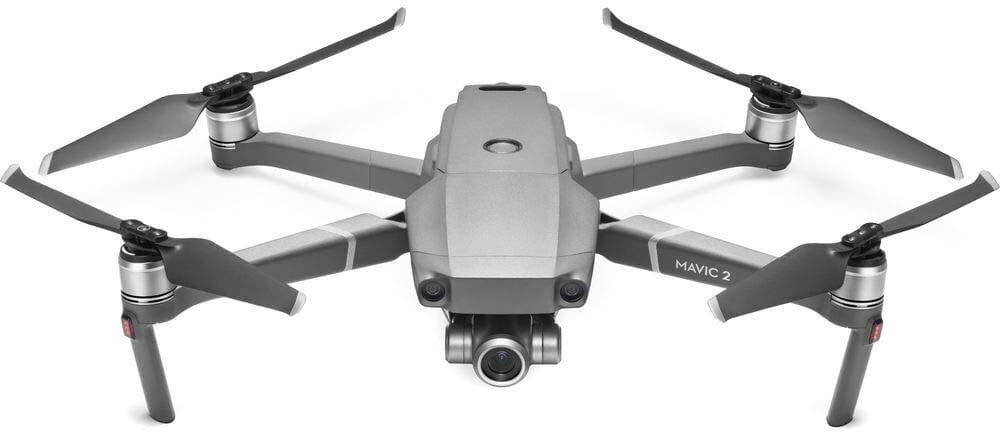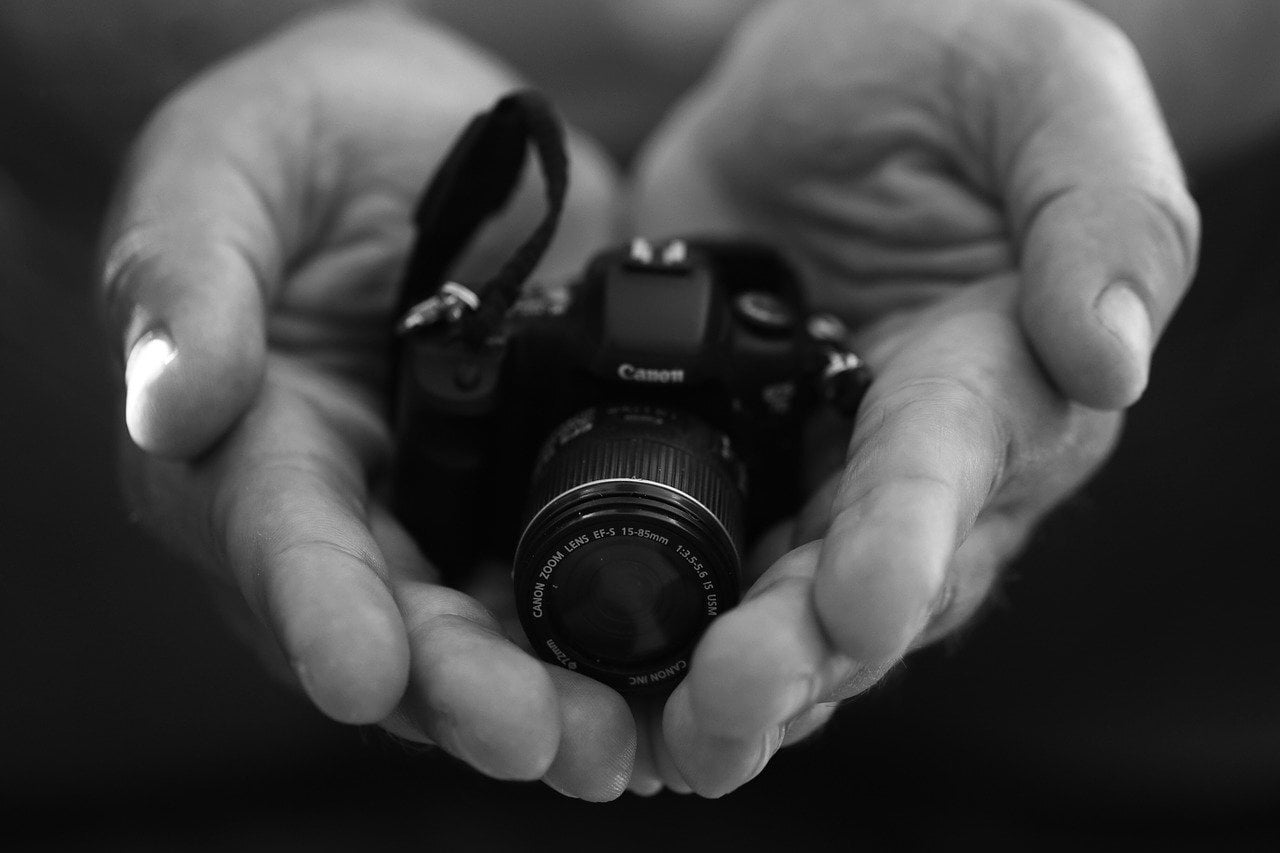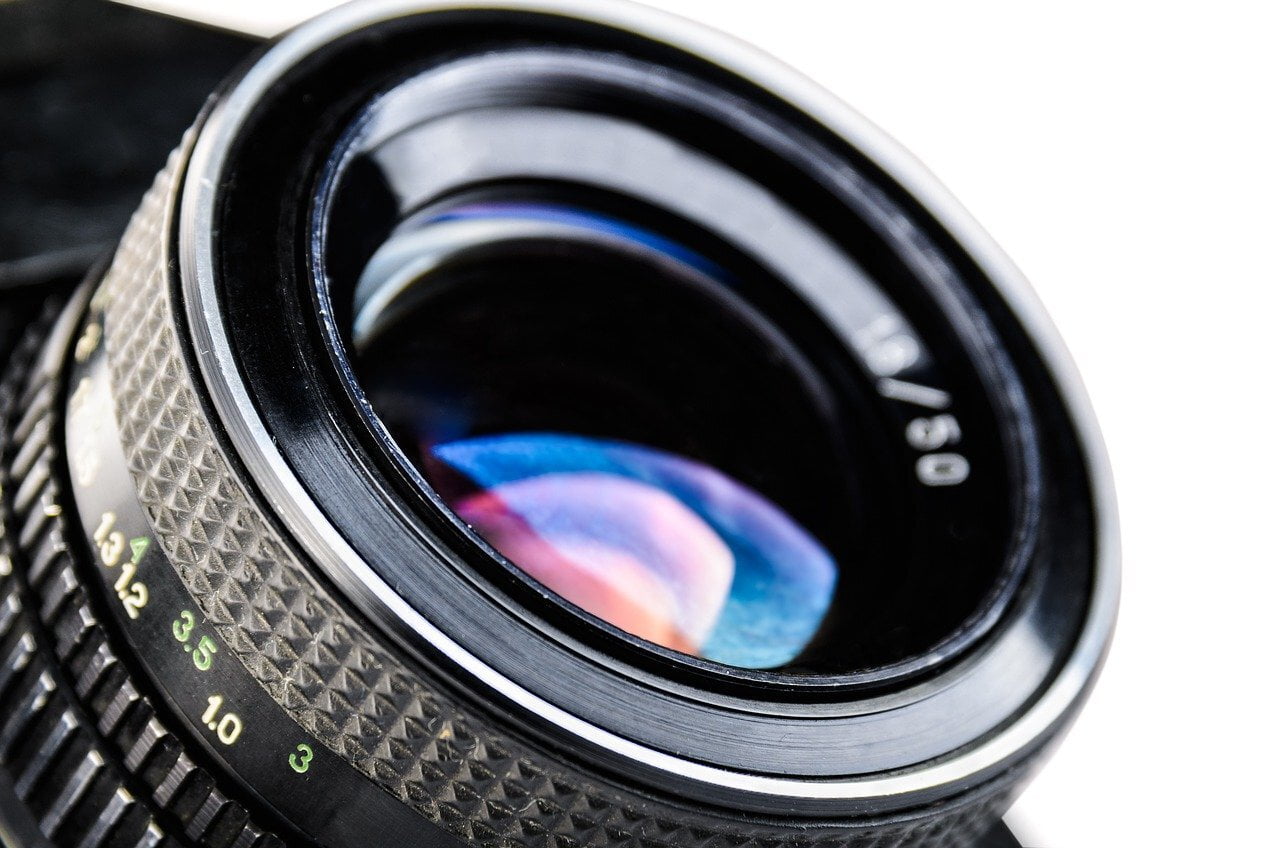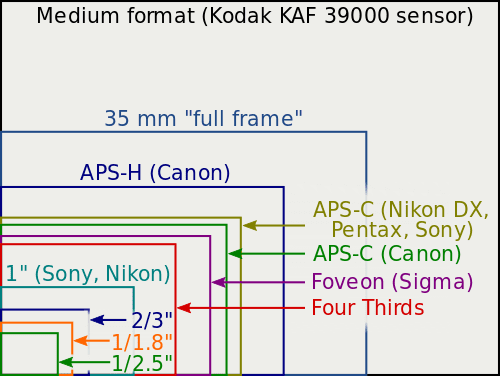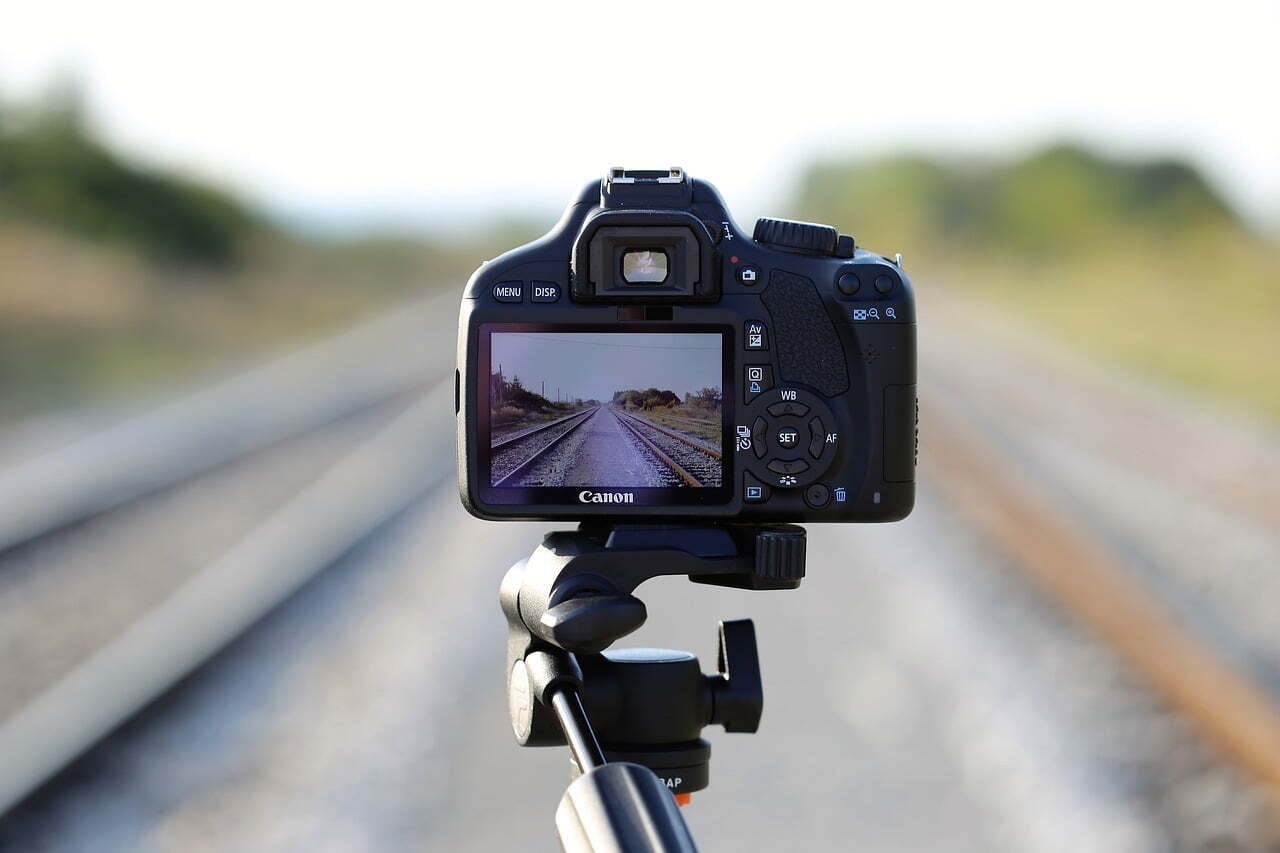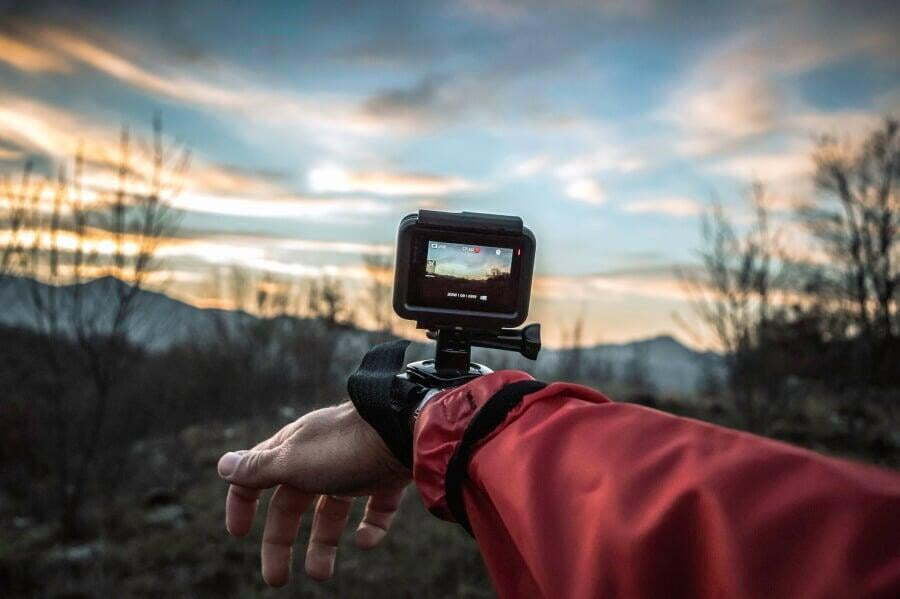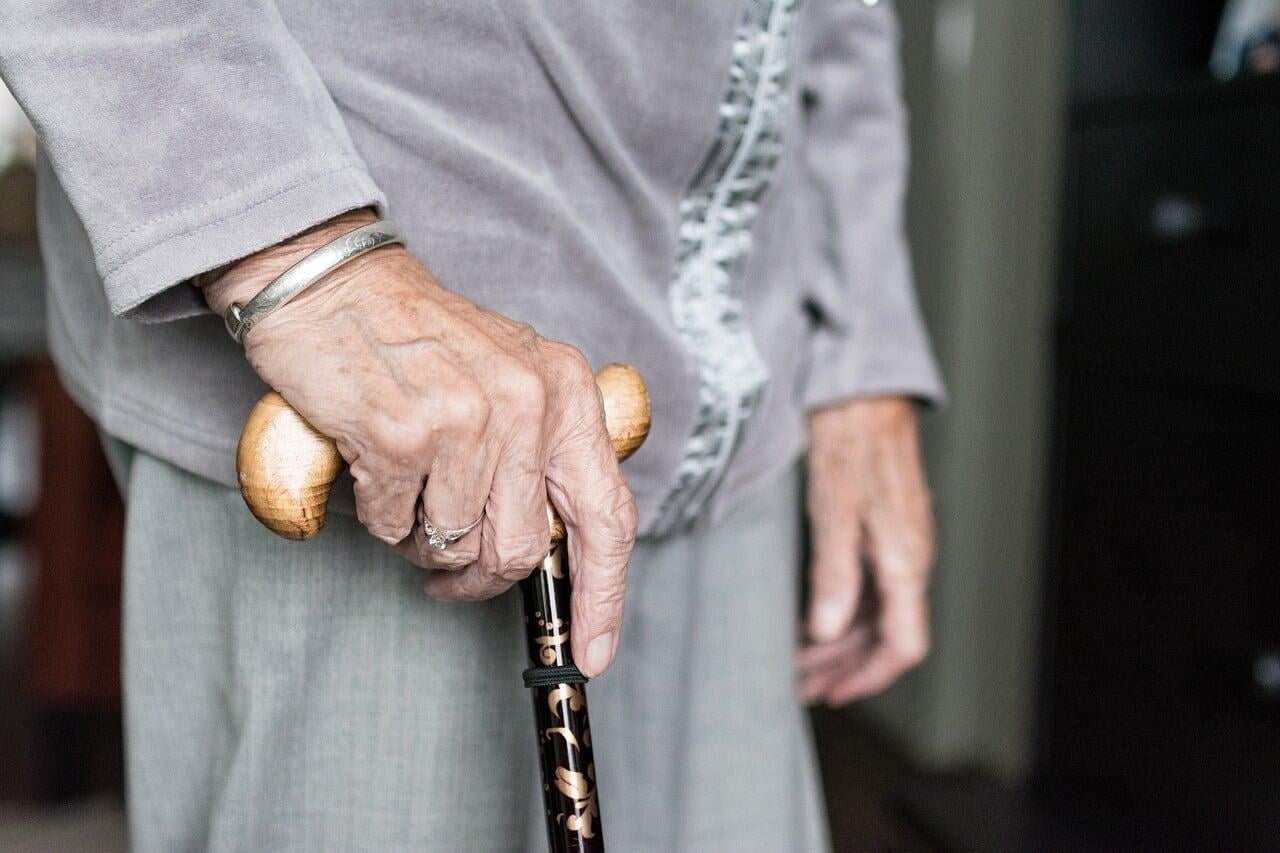The 18 Best Travel Cameras in 2021: Complete Buyer's Guide
Travelling without a camera would be almost unthinkable for many people.
As well as it just being incredibly thrilling to capture rare moments and majestic spectacles in a foreign land on camera, the photos and videos that you leave with also become valuable souvenirs that can jog faded memories of past trips when you revisit them in the future.
These captures also allow you to share the highlights of your trip almost instantaneously with friends and family back home, so that they can vicariously travel through your updates and stay in the loop.
You might also enjoy creating content from your travel photos and videos in order to reach a wider audience if you believe that your escapades would be interesting enough to garner attention from strangers.
You might create a blog or an Instagram page or a YouTube channel and with time and nurturing, it might grow into a fully-fledged business. You could also create prints from your travel photos and sell them, if they’re good enough.
Whatever your reasons for wanting to capture the scenes and stories from your travel adventures on camera, one thing is for certain; being able to take amazing shots can only help your cause.
Now, there are many ways to improve your travel photography, but one of the most important considerations is the tool that you’re using for the job, or in this case the specific travel camera that you shoot with.
When it comes to travel photography, or any type of photography for that matter, equipment matters. Period.
But here's where it starts to get a little confusing, as there are so many different types of camera that are suitable for capturing images and video footage on the road; you have DSLR, mirrorless, compact, action, drone and smartphone cameras, just to name the main camera types that travellers use.
Even if you know what broad category of camera will best satisfy your requirements, you then have to zero in on a specific model, which can be an overwhelming task given the sheer number of options in today's marketplace.
That’s exactly why we’ve gone ahead and done all the hard research for you, so that you can see in an instant exactly what are the best travel cameras without having to make all the painstaking comparisons yourself.
In order to create this roundup of the best travel cameras, we carefully examined all the popular cameras in today’s marketplace and out of that long list we picked out the ones that offered the best value for money, the best features and capabilities, the best portability or the best balance of all of these.
So, whether you’ve come here to discover the best DSLRs, the best mirrorless camera, the best point-and-shoot cameras, the best action cameras, the best drone cameras or even the best phone cameras for travel, we’ve got you 100% covered with this guide.
Without further ado then, let’s get the show started.
1. Quick Glance: The 18 Best Travel Cameras in 2021
2. 18 Best Travel Cameras in 2021 (fully reviewed & compared)
2.1 The best DSLR cameras for travel
2.2 The best mirrorless cameras for travel
2.3 The best compact (point-and-shoot) cameras for travel
2.4 The best action cameras for travel
2.5 The best drone cameras for travel
2.6 The best phone cameras for travel
3. Twelve important factors to consider when choosing a camera for travel
Quick Glance: The Best Travel Cameras in 2021
Best DSLR camera for travel: Canon EOS 77D
Best mirrorless camera for travel: Canon EOS R5
Best compact camera for travel: Canon Powershot G5 X Mark II
Best action camera for travel: GoPro Hero 9 Black
Best drone camera for travel: DJI Mavic 2 Zoom
Best Android phone camera for travel: Google Pixel 5
Best iOS phone camera for travel: iPhone 12 Pro
18 Best Travel Cameras in 2021 (fully reviewed & compared)
In this section of the guide we review and compare all of our top travel camera picks for 2021.
We describe and evaluate the best DSLR cameras, mirrorless cameras, point-and-shoot cameras, action cameras, drone cameras and phone cameras, so no matter what type of camera you're interested in buying, there should hopefully be something below that takes your fancy.
The best DSLR cameras for travel
DSLRs have always been somewhat problematic as travel cameras on account of their weight and bulkiness. When you include lenses and essential accessories, you could easily be forced to carry around an extra bag exclusively for your camera gear.
But because DSLRs were the only viable option for more serious travel photography enthusiasts and professionals, many travellers still carried one, in spite of the portability issues.
In recent years, so-called mirrorless cameras have disrupted the industry, offering much of the same features as DSLRs, but with a somewhat smaller footprint. Consequently, many travel photographers have switched over to enjoy the portability benefits.
Nevertheless, there are still plenty of globetrotters, myself included, that have decided not to make the switch to mirrorless cameras.
DSLRs retain a handful of advantages over mirrorless cameras, such as having an optical viewfinder (mirrorless cameras have an electronic viewfinder), potentially superior battery life (if the LCD screen is not overused), better autofocusing on fast-moving objects, a bigger selection of lenses (for now at least) and so on.
If you’re going to travel with a DSLR, I recommend opting for a relatively lightweight model with a crop sensor, as the full-frame cameras are significantly heavier and lugging one around might give you a sore arm or suck the joy out of travelling.
Based on this criterion of not compromising portability, here are our recommended DSLR cameras for travel.
1. Canon EOS 77D: Best Overall DSLR Camera For Travel
Dimensions: 5.2 x 3.9 x 3 in (131 x 100 x 76 mm)
Weight: 19.05 oz (540 g) including battery & card
Sensor: 24.2 MP APS-C CMOS crop sensor (22.3 x 14.9 mm)
Image processor: Digic 7
Viewfinder: Pentamirror, 95% coverage
LCD: 3-inch vari-angle touchscreen
Video: Up to 1080p/60fps
Max continuous shooting speed: 6fps
Connectivity: Wi-Fi, Bluetooth, NFC
Battery life: 600 shots (viewfinder mode)
The Canon EOS 77D is the most advanced DSLR camera that you can buy from Canon before transitioning into the mid-level line of cameras that become too heavy and unwieldy for most people to comfortably travel with.
The 77D is one step up from the Rebel T7i (EOS 800D) and one step below the EOS 80D, which is a significantly (35%) heavier and bulkier camera than the 77D and is a few hundred bucks more expensive too.
The much higher price of the 80D is somewhat surprising, given that the camera is surpassed by the 77D in a few areas and doesn’t offer any significant advantages over the 77D other than its superior battery life and weathersealing.
Weighing in at 19 oz (including battery and card) and measuring 5.2 x 3.9 x 3 inches (131 x 100 x 76 mm), the 77D is lightweight and compact enough to serve as a travel camera, but manages to still pack in enough advanced features to appeal to the more serious photography enthusiast.
It has a 24MP APS-C sensor, a Digic 7 processor (more advanced than the Digic 6 processor used in the 80D) and an articulating rear LCD monitor with touchscreen focus support. Shutter speed maxes out at a reasonable 1/4000th of a second and the camera can shoot at a maximum 6 frames per second in burst mode.
The optical viewfinder autofocus system offers 45 cross-type autofocus points, while the rear LCD employs Canon’s much lauded Dual Pixel focusing technology, which allows for a very smooth focusing when filming video.
When it comes to recording video, this camera can do full HD at up to 60 fps (also 720p at 30 fps), although it won’t shoot 4K video.
Due to the built-in intervalometer, the 77D has a very handy timelapse mode, where all the processing is done automatically in camera and the finished timelapse can be played back straight away on the LCD monitor.
Regarding connectivity, the 77D offers Wi-Fi, NFC and Bluetooth, with the latter option actually missing from the 80D, although unlike the 80D, the 77D lacks a headphone jack.
In viewfinder mode, the LP-E17 battery life of the 77D is an estimated 600 shots with this camera, which is nothing exceptional but isn’t bad either; it should be just about enough to get you through a day of fairly intensive shooting.
Pros
Mid-level DSLR specs in a relatively portable camera body
Fully articulating rear touch LCD
45-point autofocus system
Intervalometer for in-camera timelapse shooting
Cons
No weathersealing
No 4K video
2. Canon EOS 250D/Rebel SL3: Best Canon DSLR camera for minimalist travellers
Dimensions (W x H x D): 4.8 x 3.66 x 2.76 in (12.2 x 9.3 x 7 cm)
Weight: 15.9 oz (451g) with battery and card
Sensor: 24.1 MP APS-C CMOS crop sensor (22.3 x 14.9 mm)
Image processor: Digic 8
Viewfinder: Optical pentamirror, 95% coverage
LCD: 3-inch vari-angle touchscreen
Video: Up to 4K UHD/25 fps
Max continuous shooting speed: 5fps
Connectivity: Wi-Fi, Bluetooth
Battery life: 600 shots (viewfinder mode)
The term “portable DSLR” might normally be somewhat of an oxymoron, but in the case of the Rebel SL3/Canon EOS 250 D, it’s a pretty apt description.
Weighing in at just 15.9 oz (451 g) including the battery, Canon dubs this as the world’s lightest DSLR camera with an articulating screen and it’s also a very compact DSLR that feels relatively small in the hand, so if you’re interested an extremely portable entry-level camera from Canon, look no further than this.
The Rebel SL3/EOS 250 D is equipped with a 24.1 MP APS-C crop sensor, a Digic 8 image processor and a 3-inch vari-angle touchscreen, which employs Canon’s famous dual pixel CMOS autofocusing system, where each pixel has not one but two light-sensing photodiodes.
One of the nice features of this camera is that it can record 4K UHD (3840 x 2160) video at 24 and 25 fps (it was the first Canon camera to offer this capability), although the focusing system isn’t quite as smooth when shooting in 4K. It’ll also shoot 60 fps at 1080p if you need latitude for creating slow motion shots.
The camera comes with both Wi-Fi and Bluetooth connectivity for transferring images to your devices or remotely controlling it, and they haven’t omitted a 3.5 mm audio jack in case you want to connect an external microphone for vlogging.
The Rebel SL3 runs on a regular LP-E17 battery but the life is CIPA-rated at a pretty exceptional 1,630 shots due to the new Digic 8 processor that the camera employs, which means that a single fully charged battery could last you for days.
Of course, that battery life only applies if you exclusively use optical viewfinder; you'll only get around 350 shots if you use the rear LCD.
Pros
Ultralight and compact for a DSLR
Fully articulating touch LCD
Records 4K UHD video
Exceptional battery life
Cons
No weathersealing
Only 9 autofocus points when using the viewfinder
Max burst shooting speed is a little on the slow side
3. Nikon D3500: Best Nikon DSLR camera for minimalist travellers
Dimensions: 4.9 x 3.9 x 2.8 in (124 x 97 x 69.5 mm)
Weight: 14.6 oz (415 g) with battery and memory card
Sensor: 24.2 APS-C CMOS 4 (23.5 mm x 15.6 mm)
Image processor: EXPEED 4
Viewfinder: Optical pentamirror, 95% coverage
LCD: 3-inch fixed non-touch
Video: Up to 1080p /60fps
Max continuous shooting speed: 5 fps
Connectivity: Bluetooth only
Battery life: 1,500 shots (viewfinder mode)
Although it doesn’t possess an articulating screen, the Nikon D3500 is an even lighter DSLR camera than Canon's Rebel SL3/250D and is almost as compact, weighing in at a mere 14.6 oz (415 g) including the battery and memory card.
This entry-level camera is Nikon’s lightest, simplest and cheapest DSLR, and it supplants the D3400, its less portable predecessor. If you’re a beginner and you’re looking for a super affordable and portable Nikon DSLR camera, this is a pretty much unbeatable option.
The D3500 features a 24.2 MP APS-C DX crop sensor (23.5 x 15.6 mm) and uses an EXPEED 4 image processor. The rear display isn’t articulating but it does at least provide decent colour and sharpness.
11 autofocus points are available when shooting with the optical viewfinder and the AF-P autofocus technology in the kit lens allows for snappy autofocusing. The camera can achieve 5 fps in continuous shooting mode, which is unusually high for a device in this price segment.
When it comes to shooting video, you won’t get 4K as with the Canon above, but it’ll do full HD (1920 x 1080) at up to 60/50 fps (also 30, 25 and 24 fps). As for connectivity, the camera lacks Wi-Fi, but with the built-in Bluetooth you can still wirelessly transfer images to your smart devices or trigger the shutter remotely.
One remarkable thing about this camera is the battery life, which is rated at an outstanding 1,550 shots per charge; that’s about four or five times as many shots as you’ll get out of a mirrorless camera and a lot more than most DSLR cameras will offer.
Pros
Ultralight and compact for a DSLR
Value for money
Snappy autofocusing
Outstanding battery life
Cons
No weathersealing
Fixed, non-touch rear LCD
No 4K video
The Best Mirrorless Cameras For Travel
Mirrorless cameras have enjoyed a meteoric rise in popularity in recent years, as manufacturers have gradually figured out how to furnish them with most of the key features of DSLRs without them becoming so heavy or cumbersome that travellers begin to lose interest.
Because mirrorless cameras lack the mirror and prism mechanism that forms part of the optical viewfinder system of DSLRs, they tend to be a lot lighter and more compact, making them very appealing as travel cameras. In fact, many of the most popular vlogging cameras are of the mirrorless sort.
The absence of a mirror mechanism also means that mirrorless cameras are simpler than DSLRs and are consequently less prone to breakdown and are easier to repair.
The lack of a mirror also means that mirrorless cameras can be very quiet (no clicking sound when the shutter release button is pressed), which is a great advantage when shooting wildlife or when you don’t want to attract too much attention.
They also don’t suffer from shutter lag (pictures are taken almost instantaneously), which is the delay that results in a DSLR camera from the mirror having to flip up and out of the way after the shutter release button is pressed. This means that they can help you to capture that precise moment in time-sensitive shooting situations.
Mirrorless cameras often boast higher maximum burst speeds than DSLRs and some cameras may allow for slightly faster autofocusing too. The sensors used in mirrorless cameras can be just as large as the ones used in DSLRs, with most high-end mirrorless cameras now featuring full-frame sensors.
Mirrorless cameras do have some shortcomings when compared to DSLRs, including generally shorter battery life, a smaller selection of lenses (although this is always improving) and no optical viewfinder, but many travellers feel that the advantages outweigh the disadvantages and have consequently opted for a mirrorless camera as their primary travel camera.
5. Olympus OM-D EM-5 Mark III: Best overall mirrorless camera for travel
Dimensions (H x W x D): 3.35 x 4.92 x 1.97 in (85 x 125 x 50 mm)
Weight: 14.6 oz (414 g)
Sensor: 20MP MFT Live MOS (17.4 x 13 mm)
Image processor: TruePic VIII
LCD: 3-inch vari-angle touchscreen(1,040k dots)
Viewfinder: EVF (2,360k dots)
Video: 4K UHD/30p, 1080/120p
Max continuous shooting speed: 30 fps
Connectivity: Wi-Fi, Bluetooth
Battery life: 310 shots
With a delightful balance of features, portability, performance and price, the Olympus OM-D EM-5 Mark III, which supersedes the bigger, heavier and less capable Olympus OM-D EM-5 Mark II, is our pick for the best all-rounder mirrorless camera in 2020.
The OM-D Mark III is well-built, very compact, quite light and comes equipped with weathersealing, a TruePic VIII image processor, a 121-point hybrid autofocus system, a sharp, 2.36 million-dot electronic viewfinder and a 20 MP MFT (micro four thirds) sensor; that’s a little smaller in size than an APS-C sensor but it’s also what allows this camera and its compatible lenses to be so small and portable.
The 3-inch vari-angle touchscreen works in both landscape and portrait orientations, has ample rotational freedom and can also be flipped inwards to protect the screen from scratches.
In Pro Capture mode this camera can shoot at a very impressive 30 fps with focus locked on the first frame, and if you press the shutter release halfway the camera will save 14 pre-captured shots to the camera buffer, followed by a further 85 shots once you press it down fully. These shots, which are captured before the action even begins, ensure that you still get the images you want even if you happen to press the shutter button too late after the action starts.
There’s also 10 fps continuous shooting with the mechanical shutter and 15 fps with continuous autofocus. Shutter speed goes up to a very fast 1/8000 second for capturing the most fleeting of moments.
Other nice touches are focus bracketing and in-camera focus stacking, which combines eight images with different focus points into a single image where everything is in focus. There’s also a high-res shot mode that combines multiple shots into one high-resolution 50MP image if shooting handheld, or an 80MP image if using a tripod. that combines multiple shots into one high-resolution 50MP image if shooting handheld, or an 80MP image if using a tripod.
The camera is also equipped with a 5-axis IBIS (in-body image stabilization) system that provides 5.5EV of shake compensation, ensuring that shake will be minimized even when you’re using this camera to shoot stills or video with lenses that lack inbuilt stabilization.
When it comes to video, the EM-5 Mark III is capable of shooting 4K at 30p and 24p, and there’s also a high-speed 1080/120p option. A digital stabilization system helps to further enhance the smoothness of the video footage and you can connect an external microphone if you wish.
For sharing images to your smart devices you have Wi-Fi and Bluetooth connectivity, though no NFC. Battery life is CIPA-rated at a modest 310 shots, although you at least have USB charging to top the battery up with a power bank when you’re on the go.
If this camera has a downside, it’s that the autofocus system is lagging a bit behind its competitors, but that’s only going to be an issue if you’re going to be shooting a lot of fast action or sports.
Pros
Very compact
Weathersealed
4K video
Excellent IBIS (in-body image stabilization) system
Cons
Autofocus system lags behind that of the competition
Battery life isn't great
6. Canon EOS M5: Best mirrorless camera for serious travel photographers
Dimensions (H x W x D): 3.84 x 5.43 x 3.46 in (97.5 x 138.5 x 88 mm)
Weight: 650g body only (738 g with card and battery)
Sensor: 45MP full-frame CMOS (36 x 24 mm)
Image processor: Digic X
LCD: 3.15-inch fully articulating touchscreen (2,100k dots)
Lens mount: RF mount
Viewfinder: 0.5-inch OLED EVF (5,690k dots)
Video: 8K DCI or UHD at 30p, 24p/4K DCI or UHD at up to 120p
Max continuous shooting speed: Up to 20 fps (electronic shutter)
Connectivity: Wi-Fi, Bluetooth
Battery life: 310 shots
If you have pockets that are deep enough, the Canon EOS R5 is the best mirrorless camera that money can buy right now and is perhaps the best camera from Canon full stop. This is the company’s flagship full-frame mirrorless camera and is perfect for both professionals and dedicated amateur shooters.
The form factor is very similar to the Canon EOS R and although it’s a little on the heavy side for travel (738g including the memory card and battery), that’s the case for all the high-end, full-frame sensor mirrorless cameras in today’s market including the likes of Nikon’s D7 and Sony’s A7RIII and A7RIV.
The Canon EOS R5 boasts a long list of highly impressive specs including a 45MP full-frame CMOS sensor, an advanced DIGIC X processor (also used in the 1D X Mark III), a 0.5-inch OLED EVF with a whopping 5,690k dots (0.76 x magnification) and a fully articulating (vari-angle) 3.2”with 2.1 million dots.
There's also weathersealing (up to Canon EOS 5D Mark IV standards) and 5-axis in-body image stabilization (IBIS) that goes up to 8 stops depending on the lens used (though it’ll work with virtually any native or third-party lens, including vintage lenses without electronic contacts).
The R5 also matches many of the top sports cameras in continuous shooting speed, with the silent electronic shutter capable of 20 fps (the mechanical shutter achieves 12 fps).
The blazing fast continuous shooting speed (as well as the 8K RAW video which we’ll talk about in a minute) is supported by a CFExpress card slot and there’s also a UHS-II SD card slot, which allows you to boost your total memory capacity, create a real-time backup while shooting or record RAW images onto one card and JPEGs onto the other.
The autofocus system of this camera is absolutely superb, with a staggering 5,940 AF points for stills and 4,500 for video.
The autofocus excels at eye detection, face detection, subject detection and tracking, and the animal AF feature is a game changer for wildlife photographers; it enables the camera to instantly lock onto and track mammals and birds, making it trivially easy to get in-focus shots of moving wildlife, such as birds in flight.
When it comes to video, the EOS R5 can shoot 4K at up to 120p but the headline feature is the camera’s raw (uncropped) 8K/30p capability. The 8K video is indeed stunning, although there are overheating issues and recording time limits (20 mins at 8K/30p, 35 mins at 4K/60p) if you’re recording at 4K 60p or higher.
In practice however, the overheating is unlikely to be an issue unless you’re shooting very heavily and you can still record at 4K/30p to your heart’s content without any overheating.
While we’re on the subject of video, one very handy capability worth mentioning here is the Frame Grab function, which allows you to extract individual frames from your videos as 35.4 MP JPEG still images.
As for connectivity you have Wi-Fi and Bluetooth and there’s also a decent array of sockets including micro HDMI (Type D), a 3.5mm microphone socket for recording audio, a 3.5 mm headphone socket for monitoring audio, a flash sync socket and an N3-type terminal for connecting a wired shutter release.
By the way, if you already own any Canon EF or EF-S lenses you’ll be able to use them with this camera using an adapter like the Mount Adapter EF-EOS R or the Control Ring Mount Adapter EF-EOS R (adds a lens control ring) – that’ll save you from having to invest extra money in a native lens.
The EOS R5 uses the newer 2,130 mAH LP-E6NH battery (vs the older LP-E6N which the camera is also backwards compatible with) with slightly boosted capacity. The battery life is rated at an acceptable 420 shots when using the rear LCD, although this drops down to a more modest 320 shots when using the electronic viewfinder.
Of course, you can always carry a few spares and the battery will last longer if you choose the 60 fps refresh rate for the LCD and EVF rather than the 120 fps rate. Charging can be achieved via USB-C with a high-current charger and there’s also a bundled charger option.
Pros
High resolution 45 MP full-frame sensor
Weathersealed
Stunning 8K video
Superb autofocus system
Excellent 5-axis in-body image stabilization
Blazing fast burst shooting
Dual card slots
Cons
Recording limits beyond 4K/30p due to heat buildup
A little on the heavy side for travel
Expensive
7. Fujifilm X-T200: Best Budget Mirrorless Camera For Travel
Looking for an entry-level mirrorless camera that won’t break the bank? Normally retailing for under $500, the Fujifilm X-T200 is the company’s cheapest ILC (interchangeable lens camera) and our top budget mirrorless camera pick for 2020.
The X-T200 uses the Fujifilm X lens mount and supplants its rather sluggish performing predecessor, the X-T100.
With an improved hybrid autofocus system, faster processing, 4K video and a much better rear display than the latter, the X-T200 is an ideal camera for vloggers or those looking for a camera for Instagram.
The X-T200 is lightweight (13.1 oz), compact, stylish looking and is available in Silver, Dark Silver and Champagne Gold finishes.
It sports a 24.2 MP APS-C sensor, a hybrid autofocus system with 425 phase-detect points and accurate face & eye detection, a crisp OLED electronic viewfinder with 2,360k dots (magnification rating is 0.62x) and 20 advanced creative filters. Burst shooting reaches a maximum rate of 8fps (the buffer holds about 15 shots in RAW, 23 in JPG).
The most conspicuous feature on the outside of the camera is the huge 3.5-inch vari-angle touchscreen with a 16:9 aspect ratio and a whopping 2,760k dots. The screen flips around to the front for taking selfies or vlogging.
The lightweight Fujinon XC 15-45 mm f/3.5 to 5.6 OIS PZ kit lens that the camera is typically bundled with (for just $100 extra) offers a wider angle of view than most kit lenses, so it’s great for shooting sweeping landscapes or the interiors of churches and other buildings.
If you’re a UK user that’s into vlogging there’s also the X-T200 vlogging kit, which includes a Rode VideoMic Go, Joby GorillaPod Kit 1K, a 16 GB SD card, and all the necessary cables for just £50 extra.
As for video, this camera is capable of 4K at 30 fps (also 24 and 25 fps) and 1080p at up to 120 fps, although at that frame rate you don’t get sound because the footage is slowed down in camera. 60 fps is available when recording with sound however. There’s also a HDR video function that combines videos at different exposures for better footage in high-contrast situations.
Although there’s no IBIS (in-body image stabilization), the camera does offer electronic stabilization that crops the field of view slightly, although this is only available when shooting at 1080p (not with 4k).
Connectivity options include Wi-Fi and Bluetooth (you can use these to transfer images to your devices with the Fujifilm cam remote app) and there’s a HDMI port for viewing your photos and videos on the TV, as well as a 2.5 mm connection that can be used to hook up an external microphone or wired remote control.
The battery life of the NP-W126S battery pack in the X-T200 is rated at a pedestrian 270 shots per charge (there’s also an economy setting that extends it to 450 shots), but charging is done in-camera via USB-C, so you can always top up on the go with a portable battery pack. It’s a good idea to care a spare battery too.
Pros
Great value for money
Attractive retro style
4K video
Large 3.5-inch vari-angle touchscreen
Built-in 2,360K dot EVF
Cons
Unimpressive battery life
Simplified external controls
The best compact (point-and-shoot) cameras for travel
Compact cameras, also known as point-and-shoot cameras, have been around for a long time and for many years they were the go-to option for any traveller that didn’t want to haul around a cumbersome analog or digital SLR camera during their journey.
Owing to the meteoric rise of the mirrorless camera in recent years, point-and-shoot cameras are no longer the only portable travel camera option, but they still occupy an essential niche in the market to serve the genuine minimalists.
Compact cameras are usually even more compact and lightweight than mirrorless cameras;their primary selling points are that they are pocketable and relatively easy to use like a smartphone camera, but more versatile and capable than the latter.
This portability advantage of compact cameras is largely possible because they employ smaller sensors than the APS-C, micro four-thirds or even full-frame sensors commonly found in mirrorless cameras.
The smaller sensors in compact cameras do however mean that they won’t perform as highly in low light conditions or produce the best bokeh or possess as much dynamic range.
An important thing to note about point-and-shoot cameras is that they use an integrated lens and therefore don’t come with interchangeable lenses like mirrorless cameras and DSLRs.
A fixed lens reduces versatility but it also means that point-and-shoot cameras can be refreshingly simple; not everyone wants the fuss that comes with having to switch lenses all the time. Many of these cameras offer decent zoom capabilities anyway, so you’ll be able to capture a variety of subjects both near and far with the integrated lens.
Due to their small size, some compact cameras lack an electronic viewfinder (EVF), though others do offer this useful feature.
Here are our compact camera picks for 2021.
7. Canon Powershot G5 X Mark II: Best all-rounder compact camera for travel
Dimensions (H x W x D): 2.4 x 4.4 x 1.8 in (61 x 111 x 46 mm)
Weight: 12 oz (340 grams)
Sensor: 20 MP 1-inch stacked CMOS sensor
LCD 3-inch tilting touchscreen
Lens: f/1.8 5x zoom (24 – 120 mm full-frame equivalent)
Viewfinder: EVF
Video: 4K/30p, 1080/120p
Max continuous shooting speed: 30 fps
Connectivity: Bluetooth, Wi-Fi
Battery life: 230 shots
The Canon Powershot G5 X Mark II is the best all-rounder compact camera on the market right now, providing the best balance between form, function and price. It’s a camera that just gets most things right, without doing any one thing spectacularly well.
This lightweight (12 oz with battery and memory card) and very pocketable, ergonomically designed point-and-shoot camera comes with a 20 MP 1-inch CMOS sensor and a generous 5x (24-120 mm full-frame equivalent) zoom lens that opens to f/1.8 on the wide end and affords the user ample range.
It also packs in a very nice 3-inch tilting touchscreen (it can tilt all the way forwards for selfies), a retractable electronic viewfinder, an integrated 3-stop ND filter (handy for taking long exposures in bright conditions) 4K video at 30 fps (also 1080p at up to 120 fps) and a highly impressive 30fps RAW shooting function in burst mode. Bluetooth and Wi-Fi connectivity allow you to easily pair the camera with your devices or to control it remotely.
Aside from the missing microphone jack, the only significant shortcoming of the Canon Powershot G5 X Mark II is the battery life; the rechargeable battery is CIPA- rated at only 230 shots if you use the rear LCD (180 shots if you use the EVF), so it would be a wise idea to carry a spare.
Pros
Ergonomic design
Generous zoom range
Retractable EVF
Cons
Unimpressive battery life
No microphone jack
8. Olympus Tough TG-6: Best Compact Camera For Adventure Travellers
Dimensions (H x W x D): 2.6 x 4.5 x 1.3 in (66 x 113 x 32 mm)
Weight: 8.9 oz (252 grams)
Sensor: 12MP 1/2.3 inches backlit CMOS sensor
LCD: 3-inch fixed screen
Lens: f/2.0 8x zoom (25 – 100 mm full-frame equivalent)
Viewfinder: EVF
Video: 4K 30p, 1080/120p, 480/480p
Max continuous shooting speed: 20 fps
Connectivity: GPS, Wi-Fi
Battery life: 340 shots
Available in either black or red, the Olympus Tough TG-6 stands up to its name as a tough, waterproof compact camera that will withstand rougher treatment than most and is the best option for the more adventurous traveller who requires a pocketable camera that’ll endure a bit of beating.
This lightweight (8.9 oz) yet rugged point-and-shoot camera is waterproof down to 15m (50 feet), shockproof to 2.1m (7 feet), crushproof to 100 kgf (kilogram force) and freezeproof down to -10°C. A cloth wrist strap ensures that you can keep a firm hold of the camera when shooting on land or underwater.
The 1,040k-dot, 3-inch fixed LCD screen is sharp and clear (though not touch-enabled) and scratches easily, and the small sensor does mean that this camera can struggle a bit in low light when zoomed in (this stops down the aperture to f/4.9), but with an expensive camera like this you can’t expect to have everything.
The backlit, 12MP CMOS sensor produces beautiful images and the f/2.0 zoom lens offers 8x magnification, or the equivalent of a 25-100mm full-frame lens. An accessory ring around the lens allows you to attach add-ons like fish-eye lenses and flash accessories for filling in shadows in macro shots.
The TG-6 also boasts five underwater shooting modes, an integrated 3-stop ND filter for long exposure photography, 20fps shooting in burst mode for short durations, 4K video at up to 30 fps (also 1080p at up to 120 fps and a 480 fps option at 480p), and a Variable Macro System, with four macro shooting modes that allow you to shoot closeups at distances ranging from 30 cm to 1 cm. You won’t find these kinds of macro shooting capabilities in a GoPro action camera.
For connectivity there’s GPS and built-in WiFi that lets you share images to your smart devices via the Olympus Image Share app (available or Android or iOS) or control the camera remotely.
The battery life is CIPA-rated at 340 images, which is pretty standard for a point-and-shoot camera, and because the camera supports USB charging you can also recharge on the go with a power bank if needs be.
Pros
Waterproof and rugged shell
Dedicated underwater and macro shooting modes
4K video
Accessory ring for add-on lenses and macro flash accessories
Inexpensive
Cons
LCD is not touch-enabled and scratches easily
Low light performance isn't great at full zoom
Video performance isn't as good as that of a GoPro
No massive improvements over its predecessor, the TG-5
9. Fujifilm FinePix XP40
Dimensions (H x W x D): 2.8 x 4.33 x 1.1 in (71 x 110 x 28 mm)
Weight: 8.9 oz (207 grams)
Sensor: 16.4 MP 1/2.3 inch backlit BSI-CMOS sensor (6.17 x 4.55 mm)
LCD: 3-inch fixed monitor (920k dots)
Lens: f/3.9 5x zoom (28 – 140 mm full-frame equivalent), f/3.9
Viewfinder: N/a
Video: 4K/15p, 1080/60p
Max continuous shooting speed: 10 fps
Connectivity: Wi-Fi, Bluetooth
Battery life: 240 shots
On a tight budget?
Available in four eye-catching colours (lime, yellow, graphite and sky blue) and weighing just 8.9 oz (making it the lightest camera in our roundup), the Fujifilm FinePix XP140 is our compact camera pick for those who want to stretch their dollars.
It’s not a camera that boasts too many bells and whistles, but if you’re just after something really pocketable and affordable that can take nice looking pictures and shoot decent enough video, it’s hard to think of a better alternative.
Despite its affordability, the camera is well-built, being waterproof down to a depth of 25 m (a 5-metre improvement over the previous XP130 model), shockproof against drops from heights of up to 1.8m, freezeproof down to -10°C and dustproof. You can think of it as a less sophisticated and cheaper alternative to the Olympus Tough TG-6.
The camera features a 3-inch fixed (non-touch) LCD, a 16.4 MP 1/2.3inch backlit CMOS sensor and zoom lens with a maximum aperture of f/3.9 in the top-right corner of the faceplate. The lens offers an impressive 5x optical zoom (28-140 mm full-frame equivalent) and 2x digital zoom for a total zoom range of 10x.
Shutter speed maxes out at 1/2000 second, while burst shooting speed goes up to a decent 10 fps for JPEGs; you won’t be able to shoot RAW photos with this camera.
The images produced by the XP140 are notable for their vibrancy and pop, even when the “standard” setting is selected. Other features of note are the still timelapse and 360° panorama shooting capabilities and the large selection of filters, including two new advanced ones; monochrome and rich & fine.
Surprisingly for a camera in this price range, it does offer 4K video, but the highest frame rate is a modest 15p, which doesn’t look all that great. Luckily, there’s also 1080p video at up to 60 fps, and 24 fps is also available for 1080 and 720p. You also get a new square video mode for Instagram.
For connectivity you have Wi-Fi and Bluetooth, enabling wireless image transfer to your smart devices via the Fujifilm Camera Remote app. You can also connect the camera to a Fujifilm Instax instant printer if you want to print photos directly from the camera.
The battery is charged within the camera itself via USB and the life is CIPA-rated at a modest 240 shots, so it would be wise to carry a spare if you’re anything other than a light shooter.
Pros
Very affordable
Tough and waterproof down to 25m
Impressive optical zoom
Vibrant, punchy images
Large selection of video modes and filters
Cons
Rear LCD is not touch-enabled and can be difficult to see in bright sunlight
No RAW still images
4K video is only 15 fps
Modest battery life
The best action cameras for travel
Action cameras are designed to do exactly what the name suggests – capture still images and especially video footage whilst one is immersed in dynamic activities, extreme sports and fast-paced action.
When it comes to travel, action cameras tend to be (predictably) most favoured by adventurous types but some of the latest models are also great for vloggers and selfie fans due to their possession of a front-mounted LCD screen.
The very first action camera was created in 2004 by Nick Woodman for surfing and today people are using these cameras for capturing stills and video while in the midst of all sorts of high-octane activities like skydiving, paragliding, kitesurfing, rafting, motorbiking, mountain biking, caving, swimming, snorkelling, diving, cliff jumping and rock climbing.
Because action cameras tend to be highly portable (usually moreso than even a point-and-shoot camera) shock-resistant and weatherproof/waterproof, many travellers will carry one as an ancillary camera for capturing images and video in those more precarious travel scenarios where a primary DSLR or mirrorless camera wouldn’t be up to the task or might not survive.
One of the distinguishing features of action cameras is the array of accessories and mounts that they work in conjunction with. These allow the cameras to be securely fixed to handlebars, surfboards, heads, helmets, chests, pets and other equipment/body parts, and are essential for the handsfree and smooth operation of the camera during action, as well as for providing immersive points of view.
Another distinctive feature of action cameras is their wide-angle lens, which is why they’re also very useful for capturing panoramas when your primary camera lens isn’t wide enough to cover a particular scene.
The wide-angle lens, incidentally, also enables action cameras to be used as a car dash camera to record one’s driving, although an action camera will have some limitations compared to a dedicated dash-cam, and this article does a good job of explaining why.
Since fast-paced action is not so conducive to shooting stills, action cameras tend to put greater emphasis on video rather than on their still image capabilities (although they do typically have fast burst speeds for freezing fast-paced action), and many of them consequently are capable of recording high-resolution 4K (and upwards) video at impressively high frame rates.
Most action cameras are either waterproof or come with a separate watertight casing that allows them to be taken underwater up to a certain depth.
They are the most practical option for anyone wanting to get into underwater photography or for those that would like to take over-unders (split-shots) where the bottom half of the frame captures the scene below the water and the top half captures the scene above it.
Here are our top action camera picks for 2020.
10. GoPro HERO 9 Black
Dimensions (H x W x D): 2.4 x 4.4 x 1.8 in (55 x 71 x 33.6 mm)
Weight: 5.6 oz (158 grams)
Sensor: 23.6 MP 1/2.3” CMOS sensor
Image processor: GP1 chip
LCD: 2.27-inch rear touchscreen, 1.4-inch front display
Lens: f/2.8 155° FOV wide angle
Video: Up to 5K/30p
Max continuous shooting speed: 25 fps
Connectivity: Wi-Fi, Bluetooth, GPS
Battery life: 101 minutes when filming in 1080p
The GoPro brand name has been synonymous with action cameras since it released the world’s first action camera (the GoPro Hero 35mm) in September 2004, and there still isn’t any other brand of action camera that truly rivals it.
Our best overall action camera pick for 2020 is the latest GoPro release – the flagship GoPro Hero 9 Black – which is undoubtedly the best GoPro action camera to date.
Starting off with the basics, the camera has a tough, drop-resistant build with waterproofing down to 10m (33 feet), a 23.46 MP sensor (a big step up from the 12MP sensor of the Hero 8) and is capable of 25 fps in burst shooting mode.
Due to the inclusion of two new displays (a larger 2.27-inch 320 x 240 rear touchscreen and a 1.4-inch full-colour, non-touch front LCD screen with live view for framing selfies and vlogging) and a larger battery, the Hero 9 is somewhat larger and heavier than its predecessor, but never fear because it’s still a very pocketable and lightweight camera.
A lot of people didn’t purchase the GoPro Hero 8 because it lacked the replaceable lens cover, which would have been a problem if the cover were to get scratched. Luckily, the Hero 9 has not replicated this major flaw in the Hero 8, having a lens cover that is fully replaceable if it gets scratched or damaged.
The Hero 9 otherwise retains most of the basic design features of the Hero 8, including the folding mounting fingers on the underside.
Video with the Hero 9 goes up to 5K/30p (you also have 4K/60p, 2.7K/120p and 1440/240p), so you’ll be able to crop your videos and still end up with 4K, and the new Hypersmooth 3.0 electronic stabilization results in buttery smooth footage.
A useful horizon levelling function that’s available in video and TimeWarp modes also helps to keep the horizon level even as your camera tilts during filming.
Just remember that you’ll need a big memory card if you plan to shoot 5K video and also bear in mind that most mobile devices won’t support playback at this resolution.
As with previous generation models, various lens mods (display mod, light mod, media mod etc.) are available for the Hero 9, and there’s now also a Max Lens Mod accessory exclusive to the Hero 9, which brings features like Max HyperSmooth video stabilization (up to 2.7K/60p), 360° horizon lock and an ultra-wide 155° field of view.
Although action cameras have never been geared towards still photography, the Hero 9 performs respectably well in this regard, producing sharp and clear 20MP images under bright light, although in low light the image quality does begin to deteriorate. Luckily, there’s a night mode that works with a tripod for cleaner images when shooting in low light. There’s also a night lapsemode for shooting timelapses at night.
We should also mention here that you can also extract 14.6 MP still JPEG images from videos using the camera’s “save frame” function, although if you want RAW images you’ll still have to use the dedicated photo mode.
Photos can also be taken in HDR mode and Superphoto mode, the latter involving the camera intelligently deciding the optimal imaging enhancements based on its analysis of the scene being photographed.
The Hero 9 offers three three lens modes; the wide (16-34mm) and linear (19-39mm) modes both offer 2x digital zoom and there’s also a fixed narrow mode (27mm).
One of the cool new features of the Hero 9 is scheduled capture, which allows you to choose a time within the next 24 hours for your camera to start recording automatically; this function could be very handy if for instance you wanted to record a sunrise timelapse during a camping trip but you’re not an early riser.
The Hero 9 can also be used as a 1080p widescreen webcam and there’s an option to live-stream 1080p footage to platforms like YouTube, Facebook and Twitch.
For connectivity you have Wi-Fi, Bluetooth and GPS and the camera connects to the GoPro app for remote control and easy transfer of your images and videos to your smart devices. The app is available for Android and iOS and includes a built-in editor that’s easy to use.
The 1,720 mAh battery in the Hero 9 is physically larger and has more stamina than the battery used in the previous generation model; it’s rated at 101 minutes when filming in 1080p and can be charged via USB-C from a wall outlet, laptop, power bank or car charger.
Pros
Shoots 20 MP still images
5K video
Ability to extract 14.6 MP stills from video
Front screen for selfies and vlogging
Superb EIS (electronic image stabilization)
Improved battery life
Cons
Priced slightly higher than previous models
Still a bit glitchy
Touchscreen can be unresponsive at times
11. DJI Osmo Action: Best GoPro alternative action camera for travel
Dimensions (H x W x D): 1.65 x 2.56 x 1.38 in (42 x 65 x 35 mm)
Weight: 4.48 oz (127 grams)
Sensor: 1/2.3” 12 MP CMOS sensor
Image processor: Ambarella H2
LCD: 2.25-inch rear touch display, 1.4-inch front display
Lens: f/2.8 145° FOV wide-angle
Video: Up to 4K/60p
Max continuous shooting speed: 7 fps
Connectivity: Wi-Fi, Bluetooth
Battery life: Up to 135 minutes at 1080/30p
Although the GoPro is a pretty matchless action camera, there are potential reasons that a person might want to go for an alternative brand. GoPro alternatives tend to be significantly cheaper and they may not even require you to make any compromises if you don’t need or desire any of the frills or fancy features of a GoPro.
Our top GoPro alternative pick is the DJI Osmo Action, an action camera that was originally released by the Chinese drone king DJI to challenge the GoPro Hero Black 7, although it didn’t succeed in outclassing that older generation GoPro model.
Appearance-wise, the Osmo Action looks pretty similar to a GoPro and it’s only 8 grams heavier than the Hero 7.
It sports an f/2.8, 145° FOV wide-angle lens with a detachable lens cover (this can be replaced with an ND filter or polarizer), a 2.25-inch 16:9 rear touchscreen display (which doesn’t get very bright), a 1.4-inch square front display for selfies and vlogging, a 12MP CMOS sensor and is rated as waterproof down to 36 feet, which is 3 feet deeper than a GoPro can go.
The Osmo Action shoots 4K/60p, 2.7K/60p and 1080/240p video (though it doesn't have 2.7K/120p like the Hero 7) and uses an electronic stabilization system called RockSteady to smooth out bumpy footage.
RockSteady would be just as impressive as GoPro’s Hypersmooth if it didn’t have to crop the field of view a lot more than the GoPro and noticeably reduce the image quality to achieve the same degree of stabilization.
Like the Hero 7, The DJI Osmo Action can output hyperlapses, although it maxes out at 2.7K/30p instead of the Hero 7’s 4K/30p. There’s a HDR video mode for shooting up to 4K/30p too (this feature is absent from the Hero 7), although it doesn’t look all that great.
The image quality of the Osmo Action is good, though not quite on a par with that of a GoPro, and as with most action cameras, don’t expect great low-light performance.
When it comes to still photography the camera is capable of shooting both JPEGs and RAW images in the DNG format. The continuous shooting speed maxes out at 7 fps, which is not exactly slow, but it's a far cry from the 25 fps speed of the latest GoPro Hero 9.
For connecting to your phone there’s Wi-Fi and Bluetooth and the DJI Mimo app, although the app could use some improvement in terms of sharing options and adding the option to live stream videos.
The 1,300 mAh LiPo battery supports video recording at 1080p/30fps for up to 135 minutes and 4K/60fps for up to 63 minutes. In practice, the battery life is virtually identical to that of the GoPro Hero 7.
So, what are the shortcomings then? We already mentioned that the image quality and the electronic stabilization of this action camera aren’t quite as good as that of a GoPro.
Another drawback is that, unlike with GoPro cameras, there’s no GPS or HDMI port with the DJI Osmo Action, so your captures won't be geotagged and you can’t watch back your footage on a big screen or output it to an external monitor.
Pros
Much cheaper than a GoPro
Front-facing screen for selfies and vlogging
Dedicated in-camera slow motion mode
Cons
Display is a little dim
Electronic stabilization heavily crops video footage
No GPS or HDMI port
12. Akaso Brave 7 LE: Best budget action camera for travel
Dimensions (H x W x D): 1.61 x 2.44 x 1.26 in (41 x 62 x 32 mm)
Weight: 4.48 oz (127 grams)
Sensor: 12 MP 1/2.3” CMOS sensor
Image processor: Ambarella H2
LCD: 2.25-inch rear touch display, 1.4-inch front display
Lens: f/2.8 wide-angle
Video: Up to 4K/30p
Max continuous shooting speed: Up to 30 fps
Connectivity: Wi-Fi, HDMI port
Battery life: Up to 135 minutes at 1080/30p
Looking for a good action camera that won’t eat into your wallet too much? Normally retailing for under $140, the Akaso Brave 7 LE from Chinese action camera manufacturer Akaso is our top budget action camera pick for 2020.
This is another dual-screen (2.0”rear touchscreen, 1.5”front non-touch) GoPro alternative (it looks more like the DJI Osmo Action than a GoPro), but it’s a hell of a lot more affordable and has some attributes that are normally only found in more upmarket action cameras.
Such features include a 20MP sensor, voice control and gimbal-like 6-axis EIS (electronic image stabilization) for smoother and steadier footage across all resolutions (although it’s not quite as good as GoPro’s Hypersmooth).
Being IPX7- rated, the weatherproof Brave 7 LE is only natively waterproof down to 1-metre for 30 minutes, but it does come with a plastic waterproof housing, which enables you to dive to maximum depths of 40 metres (131 feet) with the camera. You won’t be able to use the touchscreen or adjust the settings when the camera is inside the housing.
In addition to the housing, the camera also comes with a bunch of free accessories; handlebars mount, a helmet mount, sticky pads, metal cable ties (for one-time attachment) and a wrist-watch remote that’s very handy for controlling the camera when it’s mounted on a helmet or elsewhere. The camera has to be inside the waterproof housing to be attached to most of these mounts.
The camera’s video capabilities include 4K/30p, 2.7K/60p and 1080/120p and although some people may be disappointed that it lacks 4K/60p for shooting slow-mo videos in 4K, it’s inevitable that something had to give at this price point. As we mentioned above, the 6-axis EIS will help to smooth out all your shaky shots.
Thanks to the 20 MP sensor, the camera is capable of taking high-definition JPEG still images and you can shoot up to an impressive 30 fps in burst mode. Do note however that you can’t shoot RAW images with this action camera.
For varying the field of view, there are four digital lens modes; super wide, wide, medium and narrow. Shooting modes include timelapse, long exposure, diving and driving modes (if you want to use it as a dashcam).
For sharing images/videos to your phone or remotely controlling the camera with the included remote control the camera has built-in Wi-Fi, and there’s also the Akaso Go app that’s downloadable for Android and iOS. The camera also has a HDMI port, so you’ll be able to play videos on the television or hook the camera up to an external monitor.
When it comes to battery life, it helps that the Akaso Brave 7 LE comes with two 1,350 mAh Li-ion batteries, which can be individually charged in-camera or charged together at the same time outside the camera using the provided dual-compartment USB charging dock.
The battery life of the Brave 7 LE is better than that of its competitors, with many users reporting 2 hours of continuous recording for a single battery; with two batteries that then become 4 hours of stamina.
Pros
Front screen for selfies and vlogging
6-axis EIS system
Lots of included mounts and accessories
High-resolution still images
Comes with two batteries
Cons
Only natively waterproof down to 1 m
No GPS
Can't do 4K/60p video
The best drone cameras for travel
It’s only really been in the last decade or so that drone photography has really taken off among travellers.
One of the major driving forces behind this surge in popularity has been the appearance of affordable and portable consumer drones equipped with high-quality cameras that can capture impressive still images and record high-quality video footage.
Prior to this godsend, you would have had to charter a plane or helicopter to get the same types of aerial shots that a remotely operated drone can capture.
A drone offers an unfamiliar aerial perspective of the world, and the still images and videos taken by these flying surveillance machines have the power to really wow onlookers, even in an age where Internet users have (sadly) become desensitized to even the most thoughtfully composed and expertly edited photographs of tourist destinations, owing to the oversaturation of platforms like Instagram and Facebook with such images.
People simply aren’t used to seeing the world from an eagle’s point of view and there are still thousands and thousands of scenic locations around the globe that have yet to be captured from the air, even if they have already been photographed hundreds of times at ground level by tourists wielding regular handheld cameras and smartphones.
Drones can yield really stunning aerial images and footage of mountains, roads, forests, rivers, lakes, coastlines, cities, tourist sites and other interesting natural and man-made features.
They are a highly valuable weapon in the arsenal of many travel vloggers, who have not failed to notice the extra attention that they glean from viewers on YouTube when they sprinkle in a few spectacular aerial shots into their travel vlogs.
However, there are downsides to travelling with a drone and these can probably account for the reality that most people still don’t travel with one.
For starters, you have to learn how to fly a drone and that means becoming a fairly skilled pilot. It’s nowhere near as difficult as becoming a real airplane pilot of course, but there is a learning curve. Wind can be problematic (especially for lighter drones), as can overhead wires and trees. Poor piloting can result in crashes or a drone getting lost due to signal loss.
Although there are a number of portable drones on the market today, a drone is yet another piece of technology that must be carried around during a trip, and goodness knows that many travellers already carry far too many high-tech gadgets on the road; smartphones, laptops, cameras, e-readers, selfie-sticks, not to mention all the cabling and chargers that are required to keep all of these battery-draining gadgets ticking over.
There’s also the slightly pertinent issue that drones are banned outright in many countries, and would likely get confiscated at an airport of one of said countries if a traveller were to be caught trying to exit the airport with one.
Even in countries where drones are permitted, there are often strict regulations and restrictions regarding registration of your drone, where you can and cannot fly your drone, how high you can fly your drone and so on.
Nevertheless, there are plenty of countries and destinations around the world where flying a drone is very possible and not overly regulated, so it’s not all bad news.
If you’re already the owner of a drone and you’re looking to upgrade or you’re buying for the first time, we’ve got you covered here with our top drone camera picks for 2020.
13. DJI Mavic Mini: Best overall drone camera for travel
Dimensions (folded): 5.5 x 3.2 x 2.2 in (140 x 82 x 57 mm)
Weight: 8.8 oz (249g)
Sensor: 12 MP 1/2.3” CMOS sensor
Range: 1.5 miles
Max flying height: 1,600 feet
Flight time: Up to 30 mins
Top speed: 29mph (47kph)
Video: Up to 2.7k/30p
Shenzhen-based DJI has been the market leader for consumers drones for quite some time now and its recently released DJI Mavic Mini is our top overall travel drone pick for 2021.
As its name suggests, the Mavic Mini packs most of the best features of a DJI drone into a very portable flying machine. It’s compact enough to fit in the palm of your hand when folded, very lightweight (8.8oz), shoots quality 2.7K/30p video, and comes with a very reasonable price tag.
The weight is an especially significant factor in this case, as weighing under 250g means that the Mavic Mini is exempt from having to be registered in many countries, so you won’t have to worry about bureaucracy too much if you're travelling with this drone.
The controller is the same weight and about the same size as the drone itself, so the full setup still weighs under a pound, which is very impressive.
Notwithstanding its petite size, the Mavic Mini flies very competently in breezy conditions compared to other drones of a similar size, although in strong winds it’s definitely going to be buffeted about to a certain degree.
Featuring three flight modes (Regular, Sport and Cinesmooth), the Mavic Mini can fly as high as 1,600 vertical feet and can range up to 2.5 miles from you, with a flight time lasting up to a generous 30 minutes. It’s not the quietest drone out there but its tininess means that it’s very unobtrusive.
You can control the drone via line of sight using the controller or via the phone app, which is the only way to maintain control when it goes out of sight.
In the case of signal loss, there’s an automatic “return home” function, although there are no front and rear collision-avoidance sensors – this isn’t that big a deal, as it just means you’ll have to become a better pilot.
The camera on the Mavic Mini has a fixed f/2.8 aperture, a 24mm lens and a 1/2.3" CMOS sensor that can take 12 MP still images (JPEG only, no RAW) and record 2.7K/30p video (also 1080/30p) with very smooth 3-axis electronic stabilization.
The omission of 4K video is one of the few compromises that have been made in order to create a miniature version of a DJI drone. Another thing that’s been left out is DJI’s ActiveTrack function, which allows you to follow a chosen object.
There are two options when purchasing the Mavic Mini; the base drone or the fly more kit for $100 extra, which includes useful accessories like extra batteries and propellers, a carrying bag, a 360° propeller guard, an 18W USB charger, a two-way charging hub, an extra USB cable and spare screws.
Pros
Super portable
Exempt from regulations in many countries due to its low weight
Excellent video stabilization
Generous 30 minutes of flight time
Cons
No 4K video
USB-A charging only
No collision avoidance sensors
14. Ryze Tech Tello: Best budget drone for travel
Dimensions (folded): 3.86 x 3.66 x 1.61 in (98 x 92.5 x 41 mm)
Weight: 2.82 oz (80g)
Range: 100 metres
Max flying height: 30 metres
Flight time: Up to 13 mins
Top speed: 17.9mph (28.8kph)
Video: Up to 720p/30fps
Just like in the action camera market where nobody is compelled to buy a relatively pricey GoPro, there are cheaper alternatives to the drones from market leaders like DJI and Parrot.
Our top budget drone pick for 2020 is the Ryze Tech Tello, which came into existence as a result of a collaboration between DJI and a Chinese start-up named Ryze.
Retailing for under $100, it’s more of a toy or learning tool than a truly capable flying machine, but it’s the best option if you’re on a really tight budget or are just getting into drone photography.
The Ryze Tech Tello is a really tiny quadcopter drone (less than 4” x 4”) that weighs a feather-light 2.82 oz or 80g (including propellers and battery) and is controlled from a hone via WIFi-enabled phone via the Tello app (or from your laptop using a programming software called Scratch).
The downside of weighing only 80g, of course, is that the drone is strongly affected even by light gusts, and this means that you'll have difficulty controlling it in anything other than completely calm weather.
In terms of flight performance, the drone can ascend to 30 metres in height, has a maximum range of 100m, a max speed of 17.9 mph (28.8 kph) and an estimated flight time of 13 minutes, which is decent enough for a drone in this price range.
You can always buy the “Boost Combo” package that includes three batteries and a 3-bay charging hub if you want to fly for longer than that.
The camera, which possesses EIS (electronic image stabilization), has an 82.6° FOV and is capable of taking 5 MP JPEG still images and 720p/30fps video that gets beamed directly to your phone to be stored there. One issue with this is that it means the video can start stuttering if the Wi-Fi connection between your phone and the drone drops in strength.
Pros
Very cheap
Ultralight and tiny
Great learning tool for beginners
Cons
Limited range
Poor stability in wind
Unimpressive choppy 720p video
15. DJI Mavic 2 Zoom: Best drone camera for serious travel photographers
Dimensions (folded): 8.4 x 3.6 x 3.3 in (214 x 91 x 84 mm)
Weight: 32 oz (905g)
Sensor: 12MP 1/2.3” CMOS
Range: 5 miles (8 km)
Max height: 500 m
Flight time: Up to 31 mins
Top speed: 44.7 mph (72 kph)
Video: 4K/30p (HDR)
If you’re not too concerned about weight and your goal is just to be able to take the highest quality aerial photos and videos during your travels, the best drone is the DJI Mavic 2 Zoom.
Although it’s a lot heavier than the Mavic Mini, this is good news for its stability in blustery conditions, and the Mavic 2 Zoom is still compact enough to be a pleasure to travel with, as it’s easily foldable down to around half of its flying size for transportation.
Unlike other DJI drones like the Mavic Air 2 or the Mavic 2 Pro, the Mavic 2 Zoom possesses an f/2.8, 2x optical zoom lens (effective focal length range is 24-48mm), which opens up a lot of opportunities for creativity and makes it easier to capture people in scenarios where drone regulations dictate that the craft must be flown a certain minimum distance away from people.
While the zoom lens is a major advantage, the relatively small 1/ 2.3” 12MP CMOS sensor in the Mavic 2 Zoom does mean that images aren’t quite as crisp as those taken by the Mavic 2 Pro with its larger 1-inch 20MP sensor, but the JPEG and RAW stills (and videos) are still pretty impressive in terms of quality. We think the small sacrifice is worth it for the added zooming capability.
Video with the Mavic 2 Zoom goes up to 4K/30p (there’s also 4K/24p, 4K/25p, 2.7K/60p and 1080/120p), although some may be a little disappointed that there’s no 4K/60p.
There’s even a RAW video format called D-cinelike if you prefer to colour-grade your own videos or need to do colour matching to RAW footage shot on another camera.
The drone is controlled with a dual-joystick controller with folding arms that your smartphone slots into. The DJI Go 4 mobile app allows you to see the camera view, change the drone settings, and control the camera, and you can also view the drone’s position on a map thanks to its built-in GPS. The GPS functionality also allows you to hold the drone’s position while its hovering in mid-air.
Flying modes include Tripod mode (slows it down and reduces responsiveness), Positioning Mode (the standard mode) and Sports mode (for maximum speed and responsiveness) are the three manual modes, but there are also several intelligent flight modes for automated actions.
Thanks to the zoom lens, the drone has one unique mode called Dolly Zoom QuickShot that performs a dolly zoom effect like the one first seen in the 1958 film Vertigo directed by Alfred Hitchcock.
As for the drone’s limits, you can expect up to 31 minutes of flight time, a top speed of 44.7 mph (72 kph) a maximum range of 5 miles and a maximum flying height of 500 metres.
If you want to fly the drone for longer periods, it’s recommended to get the Fly More option when buying, as it comes with two extra batteries, a battery charging hub that can charge all the batteries together, a battery to power bank adapter and other extras.
For safety, the drone is equipped with collision avoidance sensors and will automatically return home when the battery drops to 25% capacity, but you can also summon it home before that by pressing the Return Home button on the controller.
Pros
Compact, foldable design
4K video
Lens has 2x optical zoom
Plenty of flight time
Cons
Not as portable as the Mavic Mini
Not affordable for everyone
Sensor is only 12MP
No 4K/60p video option
The best phone cameras for travel
For devices that are multi-functional and that don't specialize in doing any one task exceptionally well, it’s pretty remarkable just how good the cameras in some smartphones have become in the last decade.
Indeed, smartphone cameras have been very disruptive to the photography industry and can now even compete with or even surpass dedicated cameras in certain respects.
Because their sensors have to be small, the improvements in smartphone camera image quality over the years have largely come about as a result of advances in sensor technology and machine learning algorithms.
Of course, if you’re a serious photographer, you’re probably not going to be replacing your DSLR or mirrorless camera with a mobile device just yet.
Smartphone cameras still have plenty of limitations, like relatively poor low light performance, poor bokeh, no optical zoom capabilities and no ability to change lenses, no viewfinder and less manual control, just to name a few of their flaws.
Nevertheless, not everybody needs an amazing camera and depending on the level you want to take your photography to, a smartphone camera might be all you need, and might save you money on buying a standalone camera, as well as allowing you to travel much lighter and take photos without attracting too much attention.
Here are our top camera phone picks for 2021.
16. Google Pixel 5: Best Android camera phone for travel
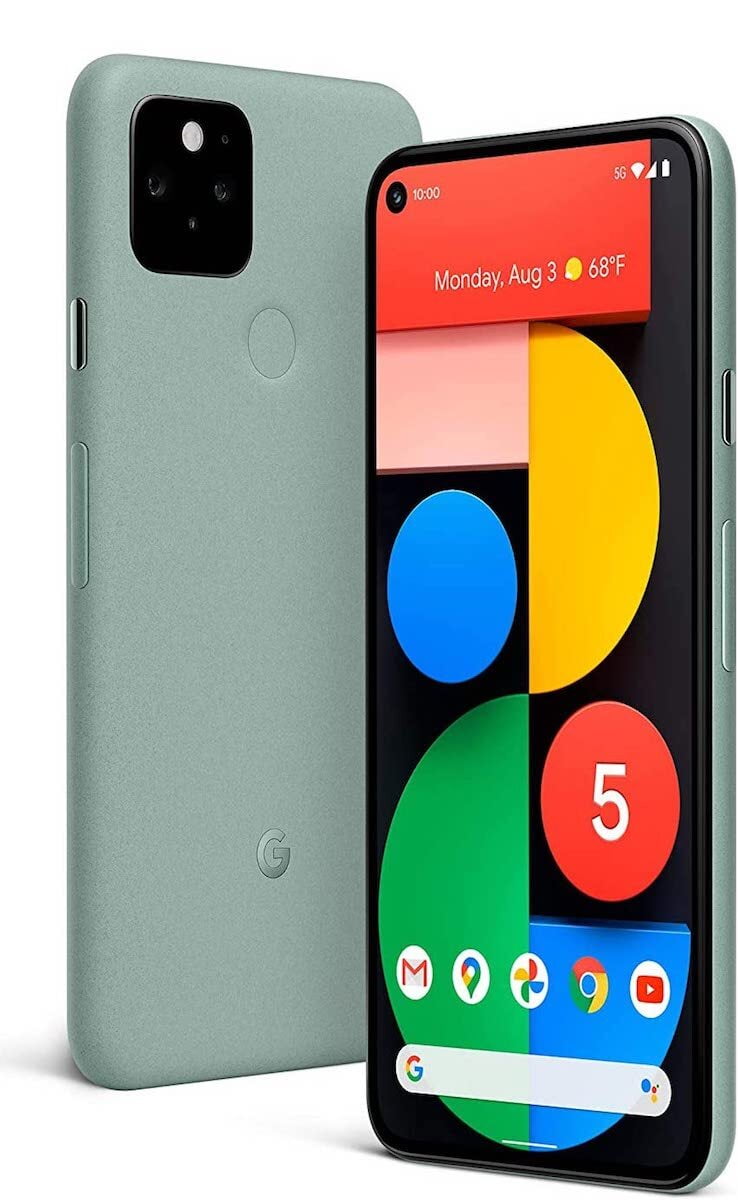
Dimensions (H x W x D): 5.7 x 2.77 x 0.31 in (144.7 x 70.4 x 8 mm)
Weight: 5.32 oz (151g)
Front camera: 8 MP (f/2.0, 24mm)
Rear camera: 12.2 MP primary camera (f/1.7, 27mm), 16 MP ultra-wide angle (f/2.2, 13mm)
Video: Up to 4K/60p
Storage: 128 GB (non-expandable)
Although there are Android camera phones with higher pixel counts, the Google Pixel 5 proves that software trumps megapixels when it comes to producing fine images – fine enough to make this our top overall Android camera phone pick for travel.
The Pixel 5’s main camera module at the rear has a primary 12.2 MP camera with an f/1.7, 27mm lens and a secondary 16MP camera with an f/2.2, ultra-wide lens (107° field of view), which replaces the telephoto lens that was found in the now discontinued Pixel 4 duo. This change will undoubtedly displease some users and please others, but the Pixel 5 is a slim and compact phone so it’s understandable.
On the front, there’s the usual 8MP (f/2.0, 24mm) punch-hole camera for selfies.
Shooting modes include portrait mode, night sight mode (for turning night into day), panorama mode and the much-vaunted astro mode, which was first seen in the Pixel 4 and which no other phone currently possesses. Astro mode automatically activates from night sight mode if it's dark enough and if the phone is stable enough,
There’s no manual shooting with the Pixel 5, although the automatic exposure is generally pretty reliable and you can capture RAW images. The images look realistic and not too HDR-ish, with dynamic saturation that depends on the type of photo you’re taking.
When it comes to video, the Pixel 5 is capable of 4K/60p footage, which looks really superb. Focusing is fast and smooth, low light performance is competitive and there are four different stabilization options.
Beyond the camera, the phone also offers 128 GB of (non-expandable) internal storage, a Snapdragon 765G processor, 8GB of RAM, a rear-mounted fingerprint scanner, a 90 Hz refresh-rate 6-inch Full HD+ (1080 x 2340) screen with Gorilla Glass 6, water-resistant (IP68 rating), 5G support and wireless charging.
Battery life, which was too short in the Pixel 4, is much improved in the Pixel 5, with the phone now boasting a much larger 4080 mAh battery (charges at up to 18W), which is higher in capacity than any battery in previous Pixel phones.
Pros
Astro and night photography modes
Superb 4K/60p video
Excellent battery life
Wireless charging
Water resistant (IP68 rating)
5G-ready
Cons
No microSD card slot to expand storage
No telephoto camera
17. iPhone 12 Pro: Best iPhone camera for travel
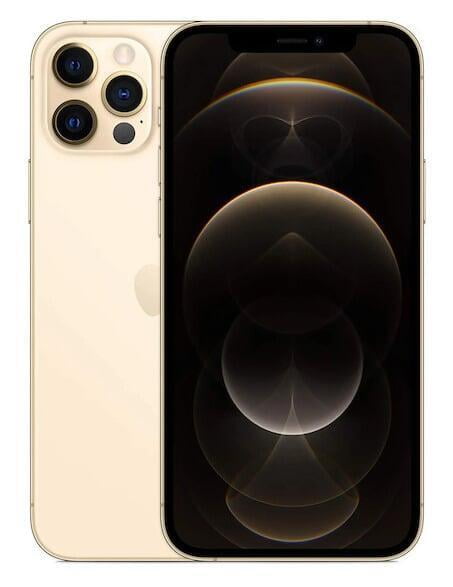
Dimensions (H x W x D): 5.78 x 2.82 x 0.29 in (146.7 x 71.5 x 7.4 mm)
Weight: 6.6 oz (187g)
Front camera: 12 MP TrueDepth (f/2.2, 23mm) + SL (structured light sensor)
Rear cameras: 12 MP ultra-wide camera (f/2.4, 13mm), 12 MP wide camera (f/1.6, 26 mm) 13mm), 12 MP telephoto camera (f/2, 52mm)
Video: Up to 4K/60p
Storage: Up to 512 GB
Are you an iPhone user? Don’t worry, we’ve got you covered.
The best iPhone camera phone is the newest iPhone 12 Pro, which has slightly improved camera performance compared the previous title-holder, the iPhone 11 Pro.
Like the iPhone 11 Pro, it features a triple-camera array on the rear to cover different fields of view.
The array consists of an ultra-wide 12MP camera (f/2.4,13 mm) with a 120° field of view, a primary wide 12 MP camera (f/1.6, 26 mm) and a 12MP telephoto camera (f/2, 52 mm), which is absent from the less shiny and somewhat cheaper iPhone 12 base model. The front-facing TrueDepth Face ID camera also possesses a 12 MP sensor.
There’s also a new LiDAR (light detection and ranging) sensor on the rear, which will enable augmented reality applications (AR) and also allow you focus up to six times faster when shooting in low light. It also enables night mode portrait shots with the wide lens.
All four of the cameras possess a night mode; this is especially useful for taking night-time selfies with the front camera, if you’re into that.
As with the iPhone 11 Pro, images are realistic-looking and minimally processed, only this time there’s slightly better detail, slightly more contrast and slightly less distortion in images taken with the wide-angle lens. Some of these improvements are undoubtedly thanks to Apple’s new Smart HDR3 processing.
When it comes to video, the iPhone 12 Pro shoots beautiful 4K/60p and 1080/120p footage just like its predecessor, with electronic image stabilization (EIS) available for all cameras at all resolutions;
It also has Dolby Vision HDR video, which creates brighter and more colourful (700 million colours) footage. There are some compatibility issues with this at the moment, though over time it’s likely that most TVs and social media platforms will adapt to be able to support this type of HDR video format.
Aside from the camera, the iPhone 12 Pro has a lot to offer, including a lightning-fast A14 Bionic Processor (the first 5nm chip in a smartphone), up to 512 GB of storage, 6 GB of RAM, a 6.1-inch Retina XDR HD+ (2532 x 1170) OLED display (with a relatively slow 60Hz refresh rate), wireless charging (with Apple’s new MagSafe magnetic charger), water-resistance (IP68 rating or up to 6 metres for 30 minutes), Ceramic Shield glass on the front panel for 4x better shatter resistance, a 3D scanner (for facial recognition unlock) and 5G connectivity.
The 2815 mAh battery is 7% smaller than the one in last year’s iPhone 11 Pro, which had a 3046 mAh battery, but the endurance is still acceptable enough.
The fastest charging option is to use Apple’s 20W charger (not included) with the lightning port; wireless charging with the MagSafe charger is relatively slow and only charges the battery to 30% from zero in half an hour.
Pros
Great build quality and durability
LIDAR sensor for faster focusing in low light
Triple-camera array
Beautiful 4K/60p video
Water resistant (IP68 rating)
5G connectivity
Cons
Display refresh rate is only 60 Hz
Wireless charging is quite slow
No charger or headphone adapter included
18. Xiaomi Redmi Note 9: Best budget camera phone for travel
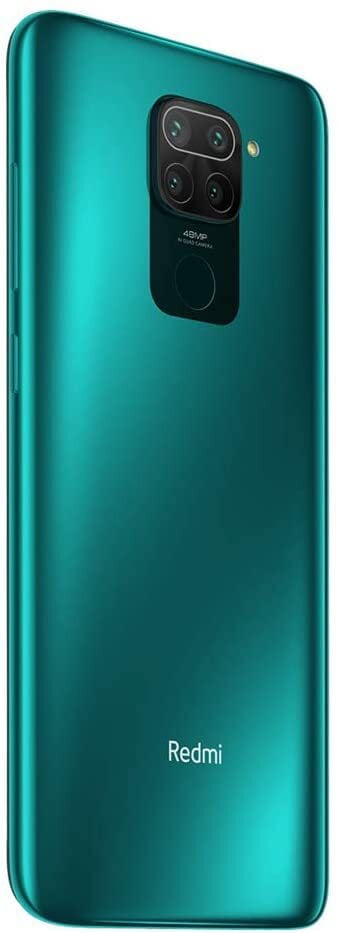
Dimensions (H x W x D): 6.39 x 3.04 x 0.35 in (162.3 x 77.2 x 8.9 mm)
Weight: 7.02 oz (199g)
Front camera: 13 MP (f/2.3, 29mm)
Rear cameras: 48 MP primary camera (f/1.8, 26mm), 8 MP ultra-wide (f/2.2, 118° FOV), 2 MP macro (f/2.4), 2 MP depth-sensor (f/2.4)
Video: Up to 1080/30fps
Storage: Up to 128 GB on board (expandable)
The very best camera phones certainly don’t come cheap. But what if you’re on a tight budget? Is there any phone with a usable camera in the lower price bracket?
Luckily, a cheap smartphone no longer has to imply a second-rate camera.
Retailing for under $250, the Xiaomi Redmi Note 9 is a case in point and is our top budget camera phone pick for travel.
The phone is endowed with a quad rear camera array, comprised of a 48 MP Quad Bayer primary camera (f/1.8, 26mm) that takes 12 MP still images, an 8 MP ultra-wide camera (f/2.2, 118° FOV), a 2MP macro camera (f/2.4) with autofocus and a 2 MP depth-sensor (f/2.4). The punch-hole front camera in the top left corner of the display is 25 MP (f/2.0).
The 12 MP shots taken by the 48 MP main camera have zingy, accurate colours and decent sharpness in well-lit areas, although darker areas are softer and the dynamic range could be better.
The 2x zoom photos crop images from the main camera and upscale them, which produces a pretty decent result, although there will be slightly increased noise and reduced sharpness.
Unsurprisingly, the ultra-wide camera produces noticeably softer and noisier 8 MP photos than the main camera, and its dynamic range is more limited too.
The macro camera produces decent images and the autofocus really helps in getting sharp, properly focused close-up shots.
The main camera performs surprisingly well when shooting at night or in low light, although there is plenty of noise. Its excellent night mode helps to further boost dynamic range and produces vibrant colours, although it doesn’t get rid of the noise. The ultra-wide camera performs poorly at night however, and doesn’t even feature a night mode.
Portraits come out very well in good lighting, with good subject separation and natural skin tones. Selfies with the 13MP front-facing camera are a little on the soft side, though you get good dynamic range and colours that pop, especially when using the HDR mode.
If you don’t like shooting in auto, the Redmi Note 9 has a Pro mode, which gives you manual control over all the camera settings, and you also have the option of shooting in RAW.
Regarding video recording with the Xiaomi Redmi Note 9, there’s no 4K, but you do at least have 1080p at 30fps. The main camera provides sharper footage here than the ultrawide camera, but both produces images that are a little soft and narrow in terms of dynamic range.
Beyond its cameras, the Xiaomi Redmi Note 9 includes a 6.53-inch Full HD+ (2340 x 1080 ) IPS LCD display protected by Gorilla Glass 5, up to 128 GB of onboard storage, up to 4GB of RAM, a MediaTek Helio G85 chipset , an IR blaster (to remotely control certain appliances), a rear-mounted fingerprint reader, NFC connectivity, splash-proofing and a microSD card slot for expandable storage.
The phone’s massive 5,020 mAh battery is on the bigger side and is an advantage for travel when you won’t always have access to charging points when on the go.
A 22.5W charger is included in the box, although the phone’s charging limit is 18W and it charges from zero to 30% in about 30 minutes, which is a little sluggish. Interestingly, you can actually use the Redmi Note 9 as a power bank to charge another handset at 9W.
Pros
Reasonably low price
Dedicated macro lens with autofocus
Decent night and low light performance
Great battery life
Cons
No 4K video
Slightly on the heavy side
Screen brightness could be batter (max is only 450 nits)
12 important factors to consider when choosing a travel camera
Choosing a travel camera isn’t the easiest task in the world and it can be an expensive purchase, so the decision isn’t to be taken lightly.
Even with a guide like this at your disposal that greatly cuts down on the amount of research needed, there are plenty of things you need to keep in mind and certain features and specifications that you’ll need to be looking out for, depending on your individual needs and preferences.
Here are the most important factors to consider when choosing a travel camera.
Camera type
The first question you need to answer is what type of camera will best cater to your needs and objectives. Of course, you may need to buy more than one type of camera depending on what your goals are.
If you’re just a regular tourist that wants to be able to take typical snapshots during the occasional overseas trip or weekend getaway, then anything more advanced than a point-and-shoot camera or a camera phone will probably be overkill and will weigh you down for no good reason.
If you take travel photography a bit more seriously and want to be able to shoot high-quality images, a mirrorless camera or a DSLR camera will probably be the most suitable primary camera option for you.
If you are a person that likes to engage in outdoor activities, extreme sports, watersports and other such pursuits when you travel, you will need an action camera if you want to be able to capture such fast-paced experiences.
If you want to be able to capture unique aerial photos and video footage during your trip, then you will have to buy a drone camera, as no other type of consumer camera is capable of flying like a bird in the sky.
If you are a professional photographer or a travel blogger, vlogger or Instagrammer, you may want to bring an array of different cameras to cover all the different scenarios that you might find yourself in.
Social media, YouTube and the blogosphere are very difficult to stand out in owing to the high level of content saturation on the Internet today, and those that can produce more varied or original images can gain a competitive advantage.
Portability
Cameras obviously vary in terms of their portability, with the two primary aspects here being the weight and size of the camera.
If you travel everywhere by car or you heavily use taxis and local transport to avoid ever having to walk anywhere, then a highly portable camera might not be as much of a priority for you as it would be for a backpacker that prefers to walk and hitchhike everywhere to save money. You could probably travel with a cumbersome and heavy DSLR camera and not regret it.
However, bear in mind that even if you’re not planning on walking long distances with your camera, it will still be a lot less enjoyable to shoot with a heavy and bulky camera, and the limits of your endurance could even be tested if you're out shooting for the entire day.
If you want a really light camera, just know that you’ll have to compromise to a certain degree in terms of the features and functionality that the camera will have. Flagship cameras tend to be bigger and heavier than mid-range or budget cameras.
If you want to travel as light as is physically possible, a camera phone will be your best option; the next best choice after that will be a point-and-shoot camera.
If you’re more serious about travel photography and you couldn’t get by with a camera phone or a compact camera, but you still want to travel as light as possible, a lightweight DSLR or lightweight mirrorless camera is a great choice for a primary camera, but be prepared to make some compromises on features.
If you’re on foot a lot or you spend long days shooting you travel, you probably don’t want to be carrying around a camera that weighs more than 600 grams.
However, in the case of an interchangeable lens camera (ILC), you also need to take into account the weight of the lens or lenses that you're buying with the camera, as some cameras that have a relatively heavy body can turn out to be reasonably light overall if they are attached to a relatively lightweight lens.
Lens
The camera body is only part of what determines the final appearance and quality of the images taken by the camera. In fact, the camera lens is arguably the even greater determinant of image quality and appearance.
The lens controls several parameters that affect the artistic look and quality of an image; the aperture size, focal length, degree of distortion, sharpness, depth of field and others.
This is why many people who want to be able to take better-looking images will only upgrade their camera lens while retaining the same camera body.
If you’re buying a camera with a fixed or integrated lens (i.e. a compact camera, action camera, camera phone or drone camera), it’s really important to ensure that you’re happy with the capabilities of the lens (zoom range, maximum aperture size etc.) because you’re always going to be stuck with that particular lens.
DSLRs and mirrorless cameras, on the other hand, have a lens mount that allows for a variety of interchangeable lenses to be attached to the same camera, so it’s not as big a deal if you realize that you don’t like the lens you bought with the camera. You can always buy a different lens that’s compatible. New lenses are expensive however, so it’s still important here to choose your lens carefully.
The bottom line is that when you’re buying a camera, you should make sure that it either comes with a decent integrated lens or, in the case of an interchangeable lens camera, is compatible with a variety of quality lenses. Remember - a large sensor or high megapixel count on its own is not enough to guarantee great looking images.
Sensor size
The sensor found inside the body of a camera is arguably the most important element in the entire apparatus, as it’s what actually captures the light from the environment and converts it into readable electric signals.
Camera sensors come in many different sizes including medium format, full-frame, APS-H (Canon), APS-C (Nikon DX, Pentax, Sony), APS-C (Canon), Foveon (Sigma), four thirds system, CX (Nikon), 2/3”, 1/1.7”, 1/2.3” and so on.
A full-frame sensor measures 36mm x 34mm and a medium format sensor is even bigger still. All the other sensors in the above list are known collectively as “crop sensors” (smaller than a full-frame sensor) and are arranged in descending order of size.
Note that there’s a large difference in size between a full-frame and an APS-C sensor, but the difference in size between an APS-H and an APS-C sensor is much less significant.
So why does the size of a sensor matter and how does it affect image quality?
Well, put simply, the bigger the sensor, the greater its capacity for gathering light. Because of its greater surface area, a larger sensor will gather more light in a given time interval than a smaller sensor.
Without getting too technical, this means that larger sensors can produce images in low light with less unwanted noise, have greater dynamic range (lose less detail in high-contrast lighting situations), provide room for more megapixels (resulting in greater detail) and produce better bokeh (pleasing blurred backgrounds).
You might think then, that the larger the sensor the better, but this isn’t necessarily true. The problem is that cameras with full-frame and medium format sensors tend to be relatively bulky and heavy, and this makes these cameras less appealing for travel.
Another issue is that these cameras tend to be a lot more expensive (medium format cameras especially can be spectacularly costly) and many people might not be able to afford such a camera or feel comfortable wielding such a high-value gadget in foreign countries.
The result is that many of the best travel cameras have crop sensors rather than the larger full-frame or medium format sensors, as these smaller crop sensors allow the cameras themselves to be much more portable.
Advances in sensor technology (i.e. backside illumination or BSI) and the use of computational gymnastics also mean that cameras with smaller sensors are always improving their dynamic range and low-light performance, so the advantages of a larger sensor aren’t as pronounced as they once were.
Smaller sensors also generally offer faster readout speeds for video, which results in improved video quality and reduced rolling shutter.
Pixel count
Camera sensors are made up of millions of individual light-gathering "photosites". You can think of these as tiny wells or buckets that collect photons (particles) of light and convert them into electrical charge.
The light information collected by these individual light sensing elements is eventually translated into the millions of differently coloured pixels that comprise the digital image.
The total number of pixels produced by a camera sensor is calculated by multiplying the number of horizontal pixels by the number of vertical pixels.
The sensors in today’s cameras produce images with millions of pixels, so you’ll see manufacturers quoting numbers like 12 megapixels (12 million pixels), 18 megapixels, 34 megapixels and so on.
Many people will have their buying decision heavily influenced by the number of megapixels a camera offers, but how closely does this number really correlate with the quality of the images and do really high pixel counts even make any difference?
In theory, more megapixels will result in higher image resolution, but in practice this isn’t always the most important aspect of an image.
The truth is that several years ago, when cameras only offered much smaller megapixel counts, you would often see a significant improvement in detail and image quality between an older camera that offered, say 2 MP, and a newer camera that offered 4 MP.
But there quickly came a point where adding more megapixels didn’t really make any noticeable difference to the level of detail unless you were zooming in on the image.
Even 4K monitors only display around 8.3 megapixels, so what’s the point your images having 40+ megapixels if most of the devices that you’re viewing them on don’t even display that many pixels in the first place?
The other issue is that camera manufacturers often just make the individual pixels smaller in order to cram more megapixels onto the same small sensor.
Smaller pixels tend to result in reduced dynamic range and more noisy images, thereby offsetting the improvements in resolution from having more megapixels.
Given these realities, megapixel count isn't actually a very reliable metric with which to gauge a camera’s overall image quality.
However, there are still certain advantages that come with having more megapixels.
One of the biggest benefits is the ability to heavily crop images and still retain an acceptable level of resolution.
If you’re shooting wildlife and you’re always struggling to zoom in really close to birds for example, you can crop a much wider shot of the scene to get the desired closeup of the bird without compromising the image resolution so much that it becomes visibly pixellated when viewed on a screen.
The other major advantage of having a high number of megapixels is when it comes to printing.
High-quality prints generally use a resolution of 300 dpi (dots per inch), and since each pixel in a digital image corresponds to a single one of these printed dots, you need quite a large number of pixels to print large images at high resolution. For example, to print a 29 x 19.3 inch image with a high level of detail, you’d need to use photos taken with a 50 MP camera.
More megapixels do also come with their downsides however.
For starters, high-resolution images will fill up memory cards and hard drives faster, which ultimately means that you have to spend more money on higher capacity cards and disc storage solutions.
Such heavy images are also less suitable for backing up to the cloud, as their much larger file size means that uploads can take forever if you have a slow hotel Internet connection.
High-resolution images also mean slower continuous shooting, slower autofocus performance and a generally less responsive shooting experience. As we mentioned when discussing sensors, video performance is better with smaller sensors, and that’s down to the camera having fewer pixels to read out, resulting in faster imaging processing and reduced rolling shutter.
The bottom line is that unless you need to heavily crop your images or you’re planning to produce very large high-quality prints from them, a camera with an unusually high megapixel count will probably be overkill and will only bring you unnecessary trouble.
For most people, anything between 12MP and 30 MP should provide a sufficient number of pixels for a primary travel camera.
Autofocusing system
The sophistication of a camera’s autofocusing system is an especially important consideration if you’re going to be shooting a lot of fast-moving action.
It’s already difficult enough to correctly compose such shots and have all the correct settings dialled in, so the last thing you want to have to worry about is focusing on the wrong part of the scene.
Some of the latest mirrorless and DSLR cameras have really superb autofocusing systems that can quickly detect, lock onto and accurately track the eyes, faces and bodies of moving people and animals, even from far away. These cameras do tend to be very expensive however.
One indicator of the quality of an autofocusing system is the number of AF points, with more points generally being better.
More AF points generally means better frame coverage by the points, and more frame coverage is good because it means your camera won’t fail to focus on objects that are close to the frame margins.
The type of AF points is also very important, especially if you want to shoot fast-moving subjects like when photographing sports and wildlife.
The three main types of autofocus points are horizontal, vertical and cross-type, with the latter type being superior for fast and precise focusing, as they are two-dimensional, being capable of detecting contrast on both vertical and horizontal lines.
The more cross-type autofocus points a camera has, the better the camera will be able to handle focusing in demanding situations.
In reality, it’s hard to know how good a camera’s autofocusing system really is without testing it out for yourself, but you can get a decent idea by reading in-depth reviews about that specific camera.
LCD screen
The LCD screen on the back of a camera allows you to view the menu, check camera settings and other information, modify settings (if it’s touch-enabled), review photos and videos you’ve already captured and of course, it helps you to frame your shot by showing you a live preview of the image that’s going to be captured on the screen.
LCD can be either fixed, tilting or fully articulating (also known as vari-angle). Fixed screens don’t move at all, tilting screens simply tilt up or down around a single axis, while fully articulating screens move around two axes, being capable of both tilting and swivelling.
I would generally recommend cameras with fully articulating screens because they offer the most versatility. You can flip the screen out to make it front-facing for framing vlogging shots or selfies, and you can also tilt the screen upwards or downwards in order to still be able to view it properly when shooting from unusually high or low angles.
Fully articulating screens can also be stored or carried around with the screen facing inwards against the camera to protect it from dirt, smudges and scratches.
Some people do prefer the simpler tilting screens, as they’re a bit more convenient and quicker to use when you just want to tilt the screen to face upwards, even if they are less versatile.
If a camera has no optical or electronic viewfinder it’s important that the LCD display gets pretty bright, as you won’t have another option for framing your images on bright sunny days if the screen is too dim to see anything.
Video capabilities
If you like to shoot video when you travel, you’ll also want to consider the video recording capabilities of the camera you’re thinking of buying. Many of today’s cameras are putting even more emphasis on their video shooting proficiency than on their still image performance.
At a minimum, I would say that a travel camera should be able to record full HD resolution (1920 x 1080) video at 60 fps (frames per second), as this will enable you to create beautiful slow-motion footage at a high resolution. If you want to be able to create super slow-motion footage, you’ll need to ensure that the camera can record at 120 fps or higher.
Many of the latest cameras are capable of shooting 4K video (some can even shoot 8K), which is certainly nice to have, but we’re still living in a world that isn’t quite ready for 4K, with a lot of people watching videos on smartphones or on laptop screens that only support full HD resolution.
You shouldn’t feel like you have to have a camera that shoots 4K video and remember also that such video files are really big and will fill up your memory cards and external hard drives at an alarming rate.
One thing that’s nice to have if you intend to shoot a lot of video is IBIS or in-body image stabilization. This will allow you to shoot smoother and steadier video footage while you’re walking or in other scenarios where the camera is shaking.
Because IBIS is a feature of the camera body and not the lens, it will still stabilize footage even when you’re using a lens that offers no inbuilt stabilization of its own.
Max continuous shooting speed
The continuous shooting speed of a camera refers to the maximum rate at which it can capture images in burst mode, which is also known as burst drive mode or continuous shooting mode.
Some of the fastest cameras can shoot at 30 fps or higher until the buffer fills and things slow down a bit, but do you really need a camera to be able to shoot this fast?
Certainly, there is an advantage to being able to shoot so many frames each second if you’re shooting very time-sensitive scenes where you’re trying to capture a precise moment. The more shots your camera can take every second, the greater the chances that you’ll be able capture that exact moment you were looking for.
This can be very useful if you’re shooting fast-moving sports action or taking candid shots of people or jittery wildlife.
This is the reason that action cameras come with relatively high continuous shooting speeds, so that you have the best chance of capturing that perfect moment in the heat of the action.
However, it’s the mirrorless cameras that really lead the way with the fastest burst speeds found in any type of modern camera. Some smartphones don’t fare too badly in this department either, with certain devices offering speeds in excess of 20 fps.
I would say that for general travel photography with a DSLR, mirrorless camera, point-and-shoot camera or smartphone however, you don’t actually need to have a camera with blazing fast continuous shooting speeds, as the vast majority of the shooting you’ll be doing will be pretty slow-paced.
I seldom use my camera’s burst mode when I travel, at least. I would say that a camera that can shoot 6 fps (or greater) for short bursts should be adequate for most people, with anything faster than that being more of a bonus than a necessity.
Battery life
Nobody likes to see that low battery warning icon when they’re only part way through a day of shooting.
Even if you’re carrying a spare or two, it’s a pain to have to interrupt your flow to pop in a new battery, and having to do so could also cause you to miss a great photo opportunity.
Of course, you might not be a person who runs down camera batteries when you travel. If you’re a light shooter that just takes the odd snapshot here and there, even the most short-lived of camera batteries you might comfortably get you through your travel days.
But if, on the other hand, you are a heavy shooter who’ll often take several hundred photos over the course of the day and maybe record a handful of video clips too, you ought to ensure that the camera you’re purchasing has sufficient battery life to endure days of intensive shooting and filming.
Camera batteries are normally rated as yielding “x” number of images or shots per charge; you’ll often hear of a battery’s CIPA (Camera& Imaging Products Association) rating.
For example, my DSLR camera’s (Canon EOS 77D) battery is rated at 600 shots when shooting through the viewfinder and 270 shots with the rear LCD display activated.
On days when I’ve been shooting (both photos and videos) intensively, I’ve come very close to fully depleting the battery but I have never had to swap it out. If my camera battery had any less stamina than it has however, I would not feel confident that it would always get me through a full day of travel.
Battery life is generally better in DSLR cameras than in other types of cameras because they possess an optical viewfinder that places less demands on the battery than an LCD monitor or an electronic viewfinder. If you’re a heavy shooter, this could be one reason to choose a DSLR over another type of camera.
Some cameras with relatively modest battery life do offer in-camera USB charging, which enables you to top up your camera battery on the go from a portable battery pack (power bank), so this capability will definitely help to compensate for a battery with poor endurance.
Age
Even if the specs of two different cameras are virtually identical (sensor size, megapixel count, number of autofocus points etc.) the newer and more recent camera model will typically perform better and produce higher quality images than the older one.
This is because the new camera model will have benefited from technological advancements in the sensor, autofocusing system, image processor and other components in the intervening time. The larger the time interval between the release dates of the two cameras, the more pronounced is the difference in this regard.
Price
Unless money is no object to you, the price of a camera is also going to affect your buying decision. If you have an upper limit for the amount you’re willing to spend on a camera, then you’ll obviously have to confine your attention to camera models that are priced below that threshold.
Although superior cameras do tend to cost a lot more money, more expensive doesn’t necessarily mean that a camera is better for you, as you could be paying money for capabilities and features that you don’t need or that you’ll never even use.
Additionally, some cameras are also just better value for money than others, so sometimes the lower-priced camera might actually be a better overall camera than the higher-priced one.
The age of a camera also affects the price, with models generally becoming discounted as they mature, so you can often bag a great deal if you're willing to buy an older camera that's been on the shelves for quite some time.
While remaining within your maximum budget, I would advise you to choose the lowest priced camera that offers all the features and capabilities that you really need and that you’ll actually use and benefit from.
Conclusion
Well there you have it, our roundup for the best travel cameras in 2021. This guide will be continually updated whenever newer and superior cameras are released that supplant existing models.
There is no best travel camera per se, but only the best travel camera for you. Everyone’s needs, experience level and priorities are different and all of the factors we discussed above should be carefully considered as you browse through the cameras in our roundup, before deciding which one will serve you best.
We hope that you’ll find something in here that takes your fancy but if not, there’ll likely be another model that’s closely related to one in here that’ll be the one for you. In any case, the cameras we’ve presented here should serve as a very useful starting point for tracking down the model that’s just right for you.
Once you've acquired a good travel camera, the next step is to learn how to take stellar photographs with it during your adventures. For that, there's no better resource than our travel photography tips article, which goes in depth on our 50 best tips for taking your travel photos to the next level.
If you liked this article or found it useful, please share it with other travellers. Is there any awesome travel camera you'd recommend that wasn't on our list? What camera do you travel with and why? Please share your thoughts with us below and we'll reply to you as soon as we can. Thanks for reading.
JOIN OUR LIST
SUPPORT US
FOLLOW US
ABOUT US
Our names are Eoghan and Jili and we hail from Ireland and India respectively.
We are two ardent shoestring budget adventure travellers and have been travelling throughout Asia continuously for the past few years.
Having accrued such a wealth of stories and knowledge from our extraordinary and transformative journey, our mission is now to share everything we've experienced and all of the lessons we've learned with our readers.
Do make sure to subscribe above in order to receive our free e-mail updates and exclusive travel tips & hints. If you would like to learn more about our story, philosophy and mission, please visit our about page.
Never stop travelling!
FOLLOW US ON FACEBOOK
FOLLOW US ON PINTEREST
BOOK ACCOMMODATION
Copyright © 2017: Twobirdsbreakingfree | All rights reserved.
-lw-scaled.png.png)
